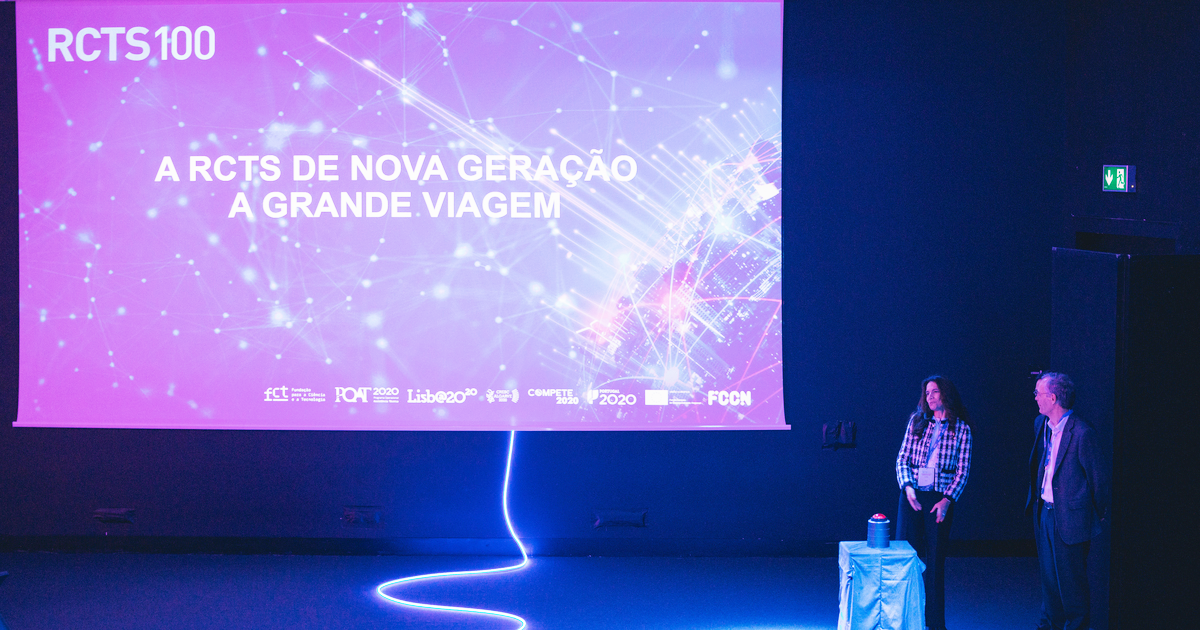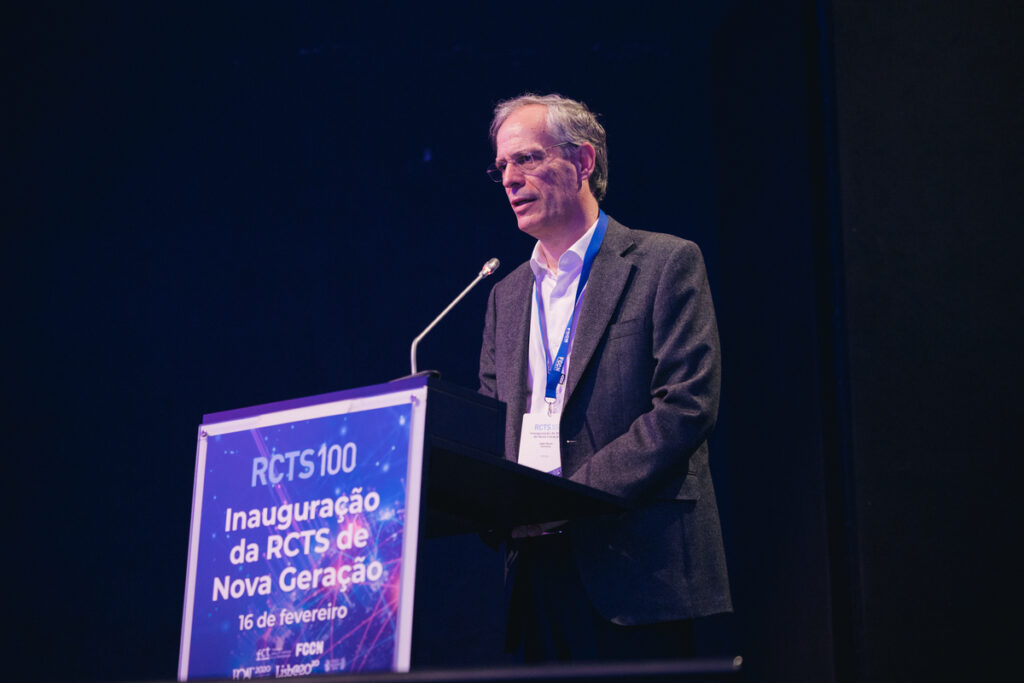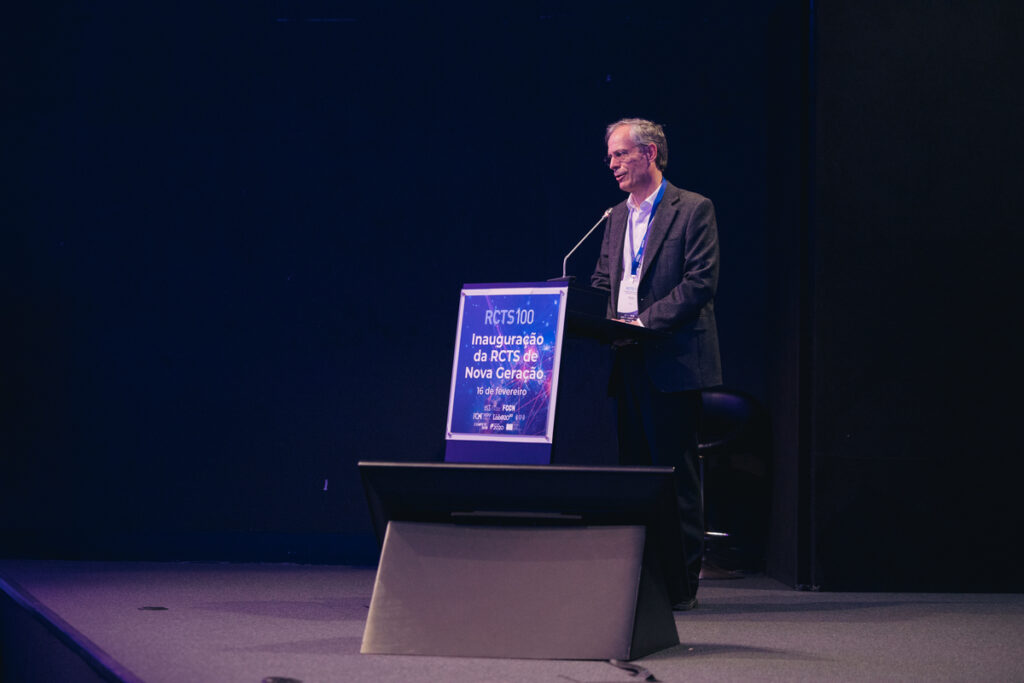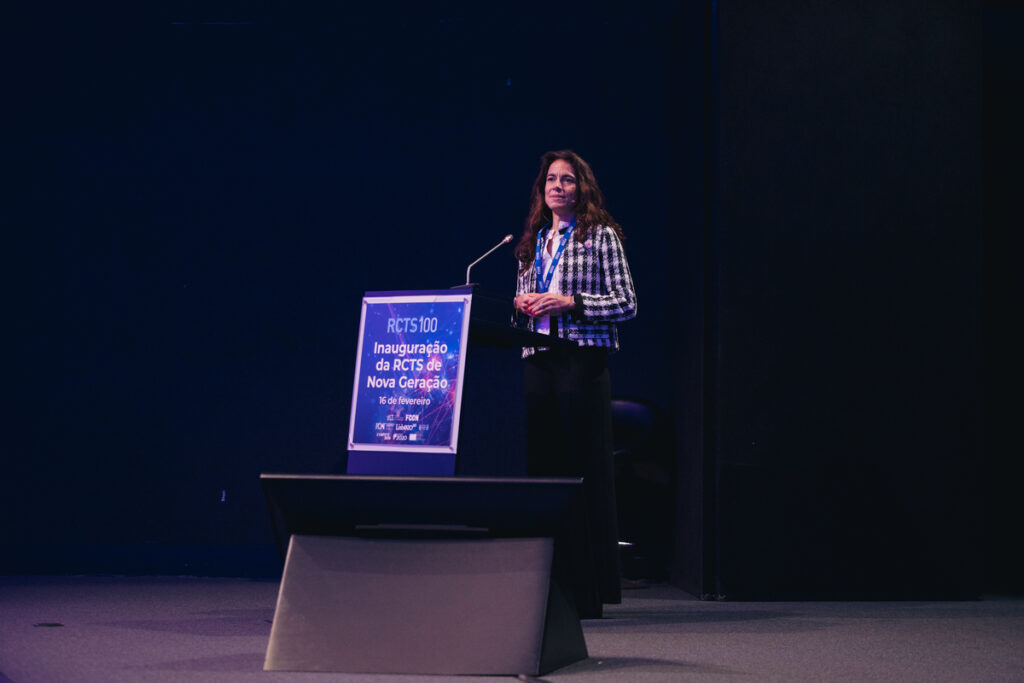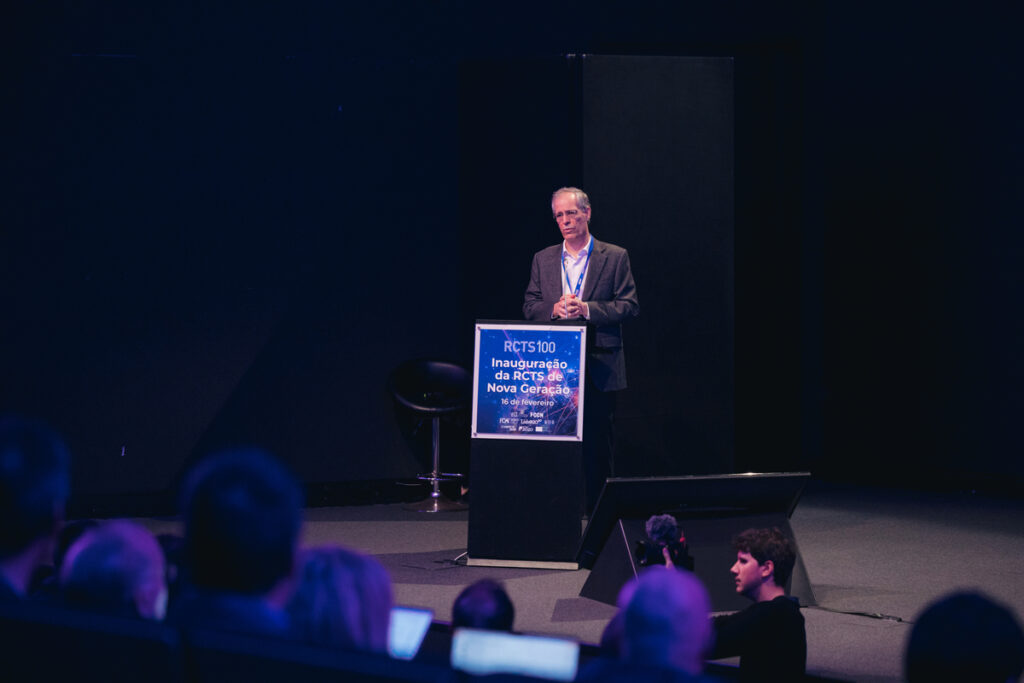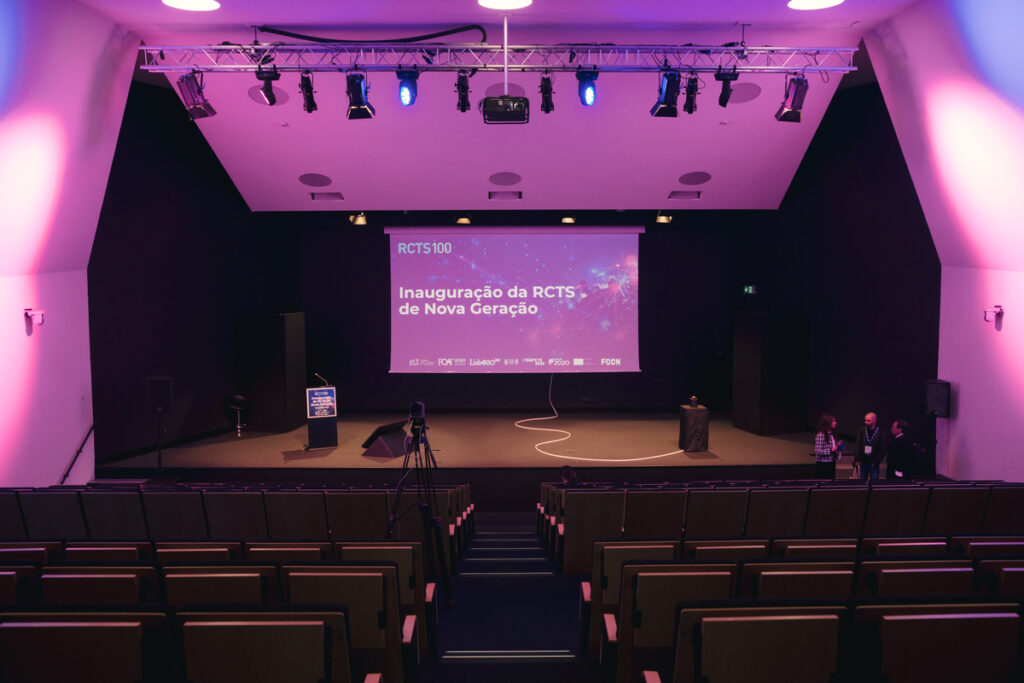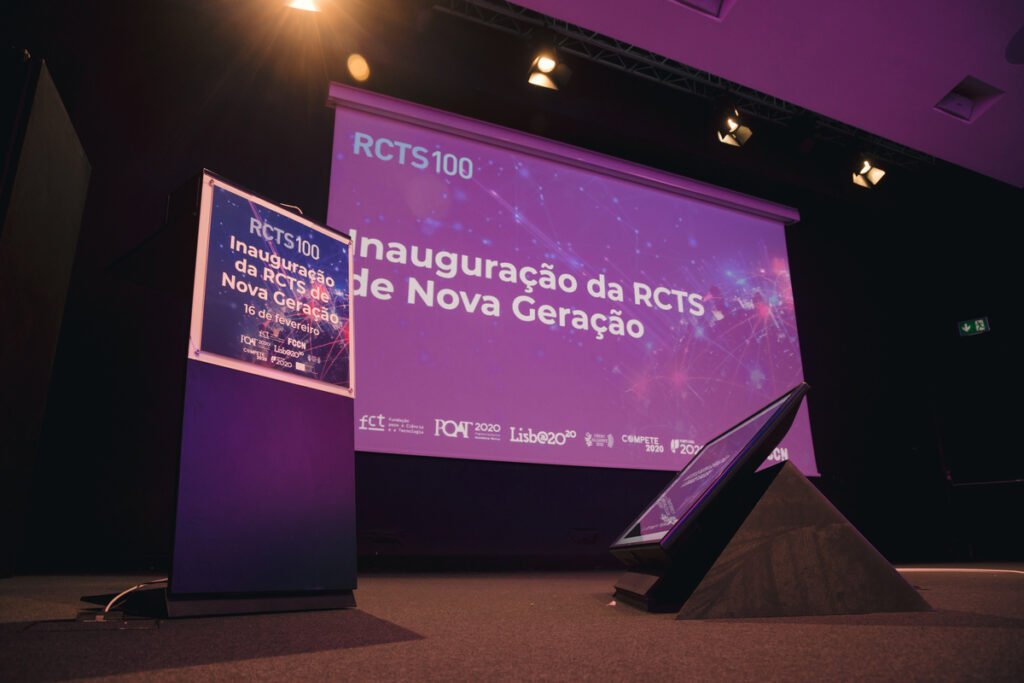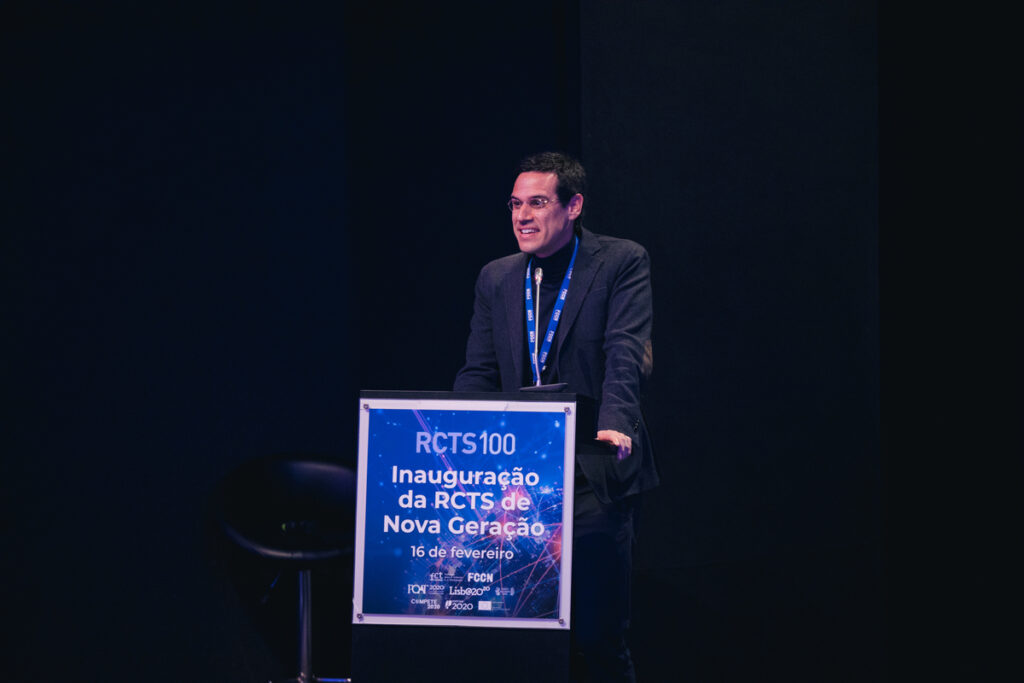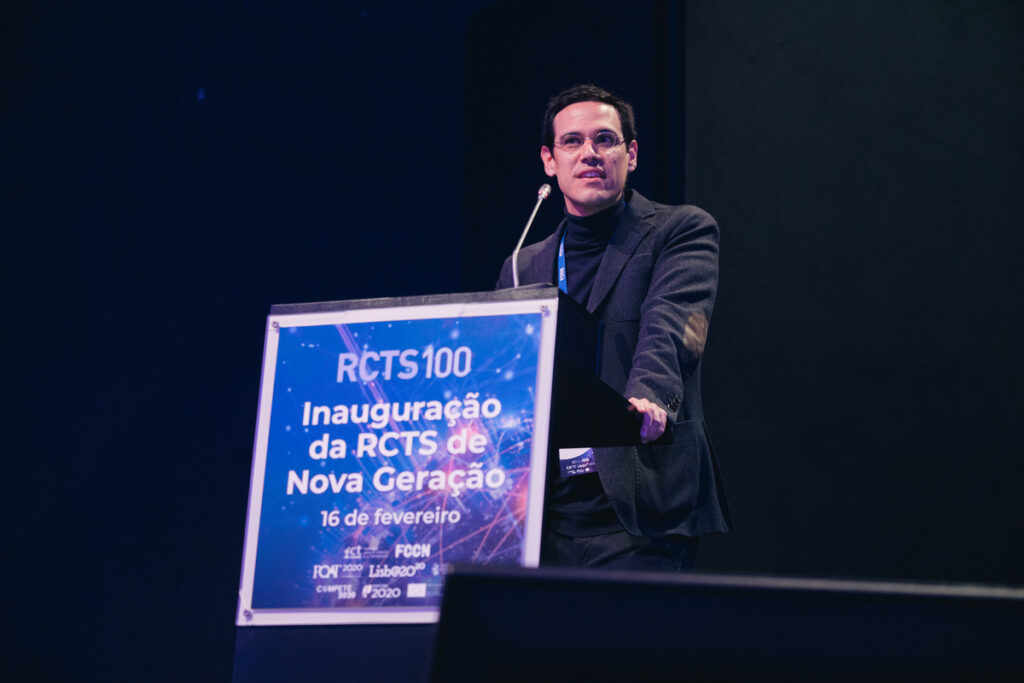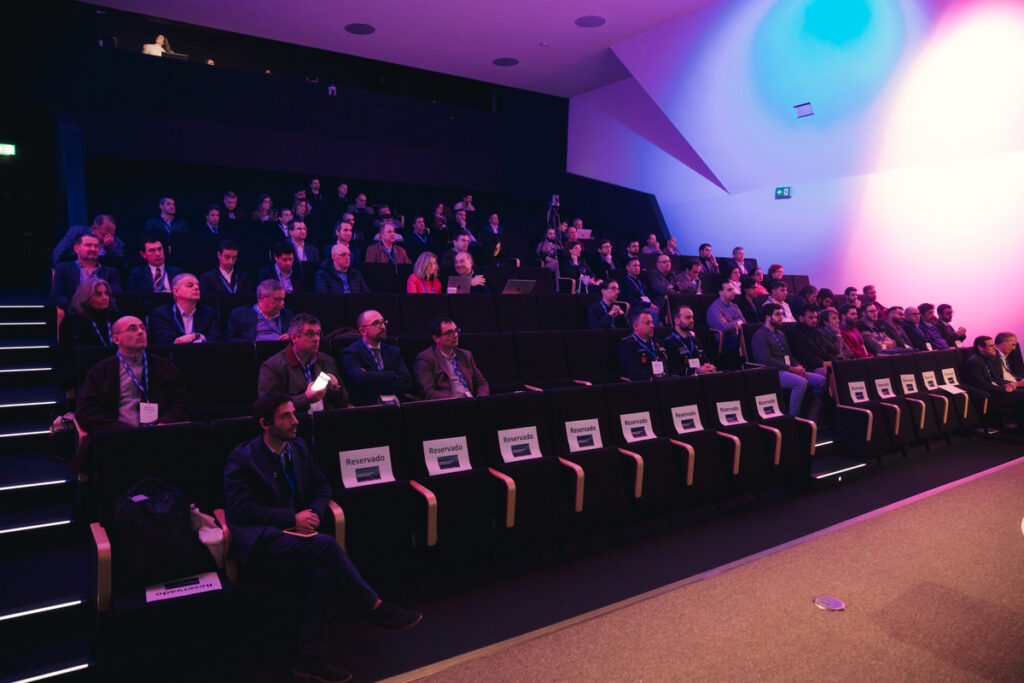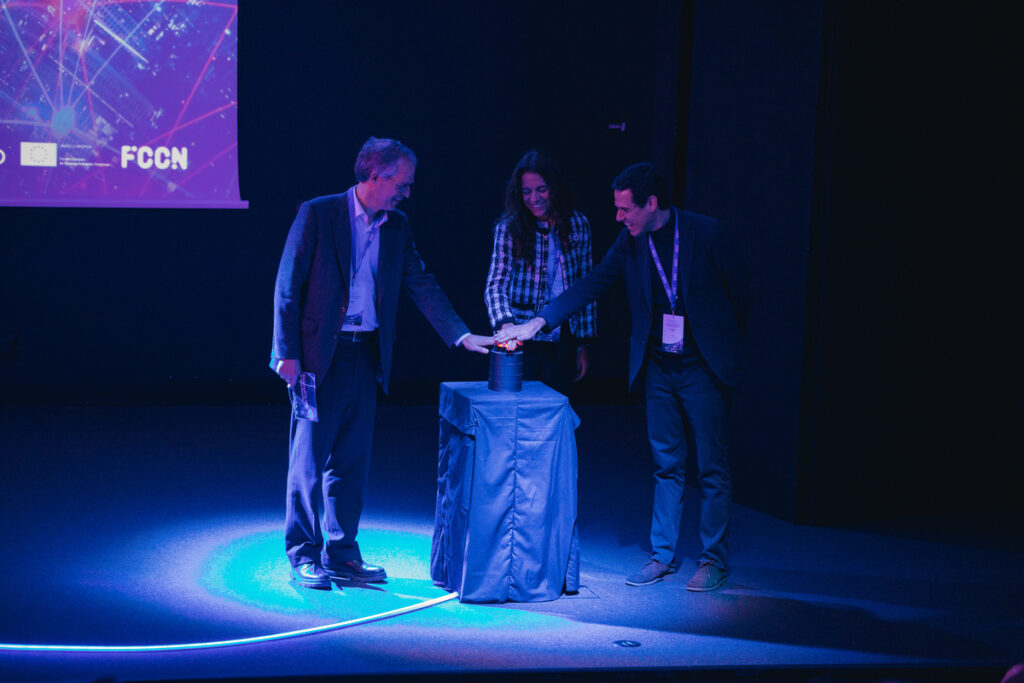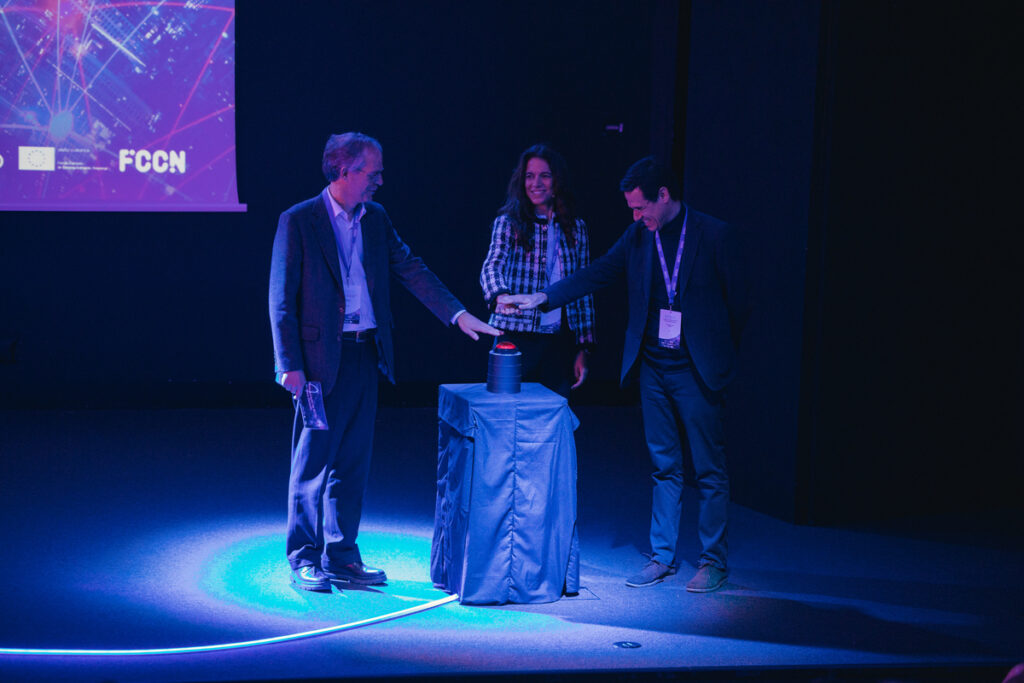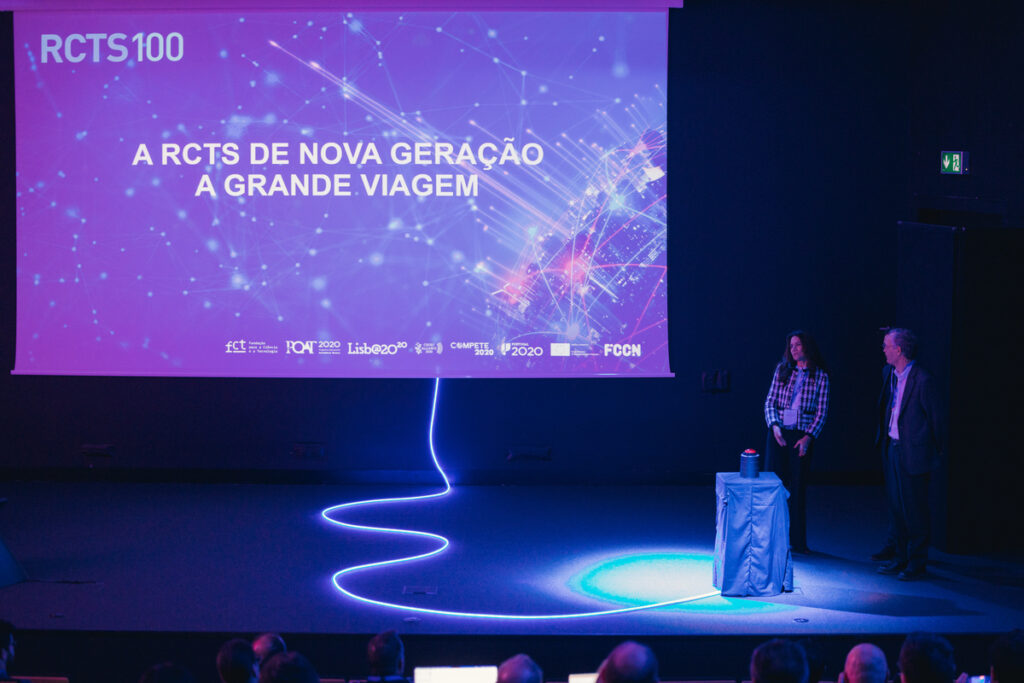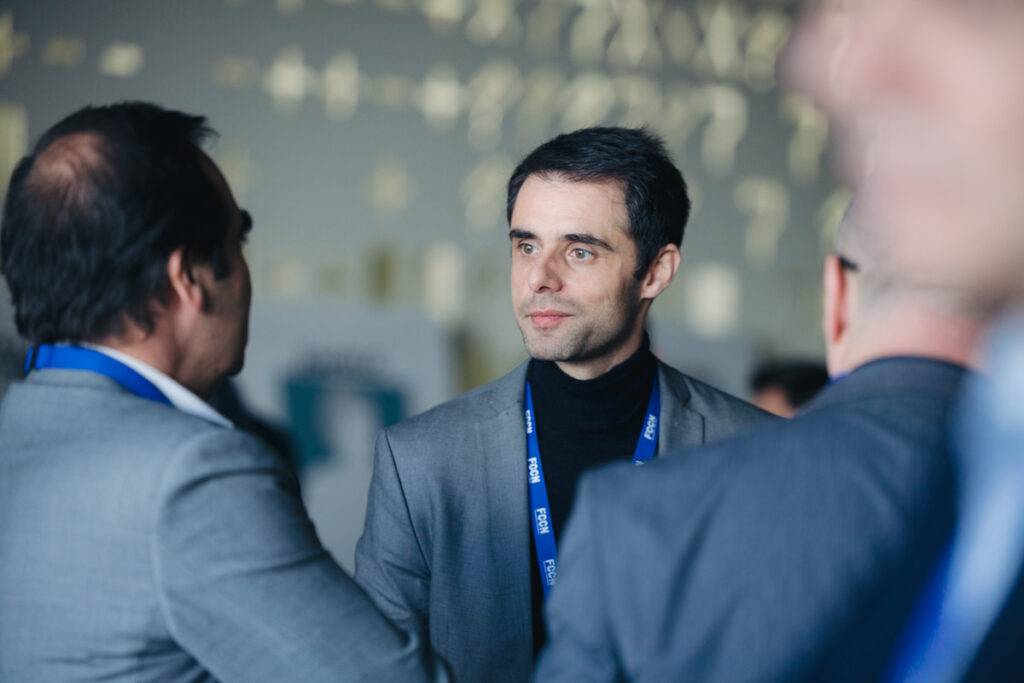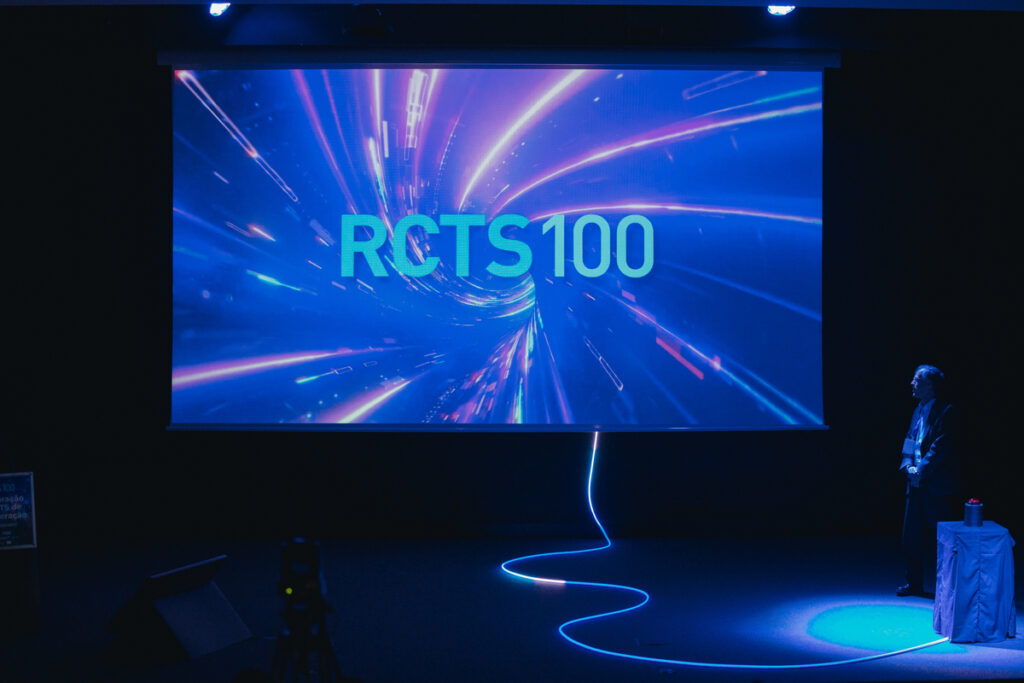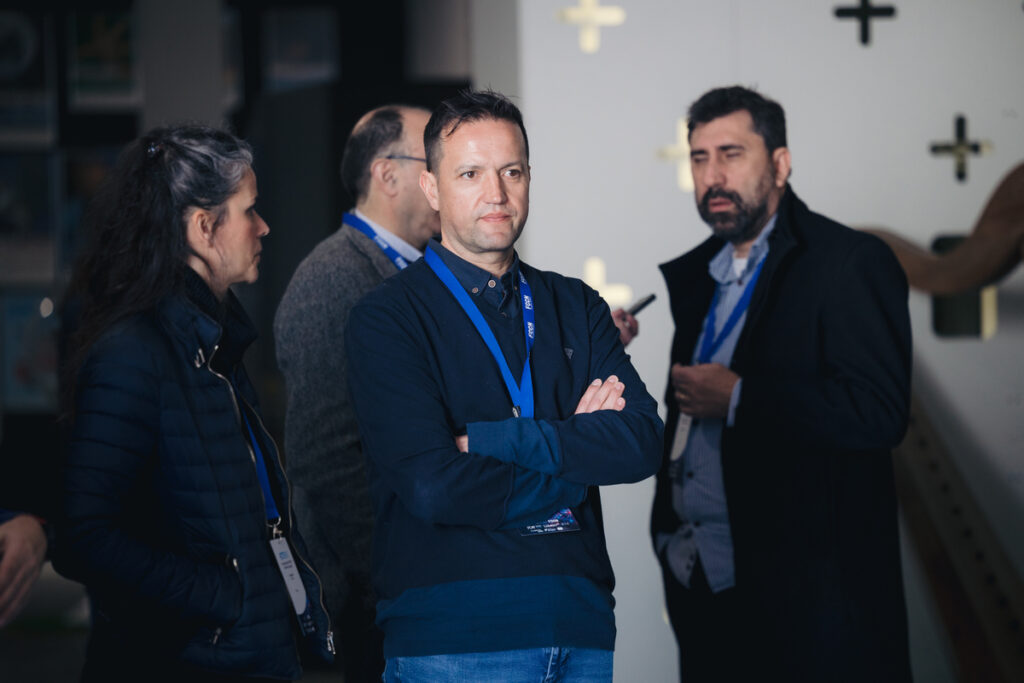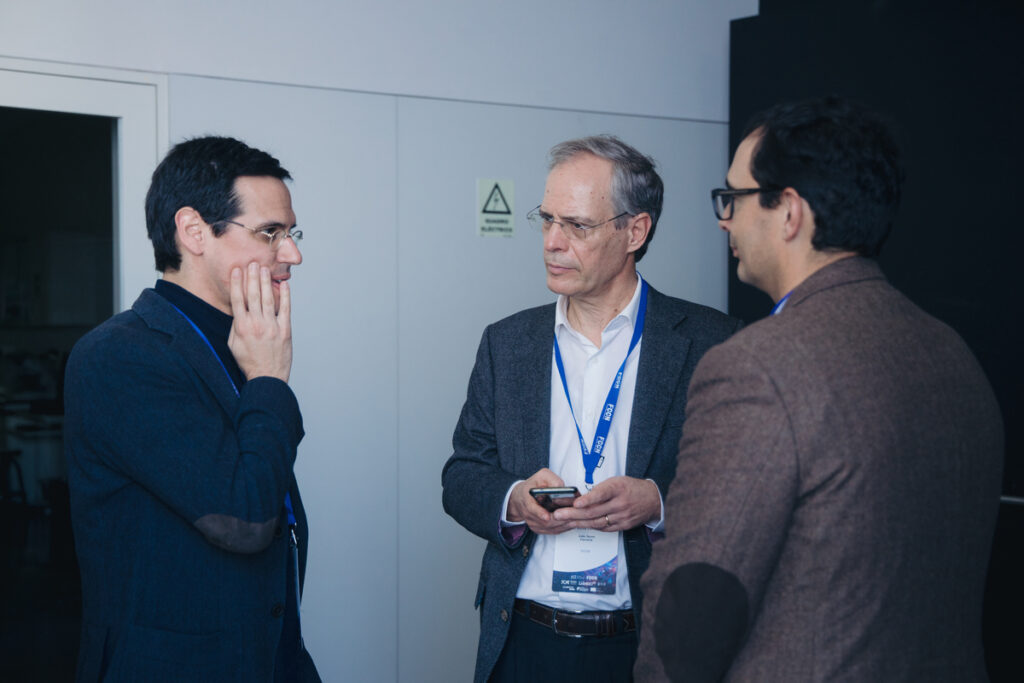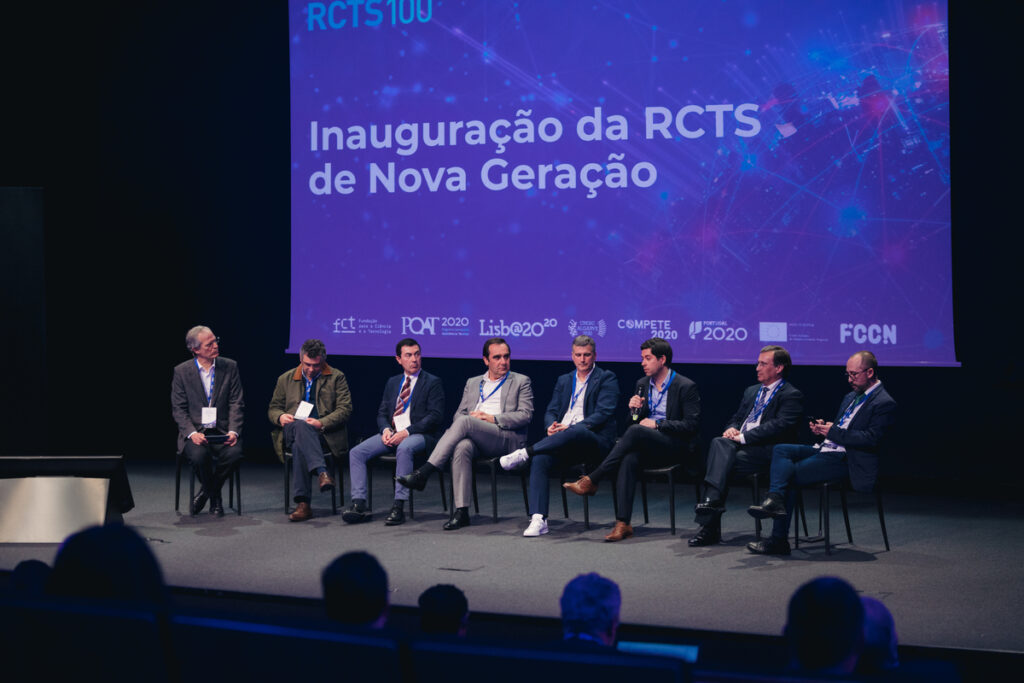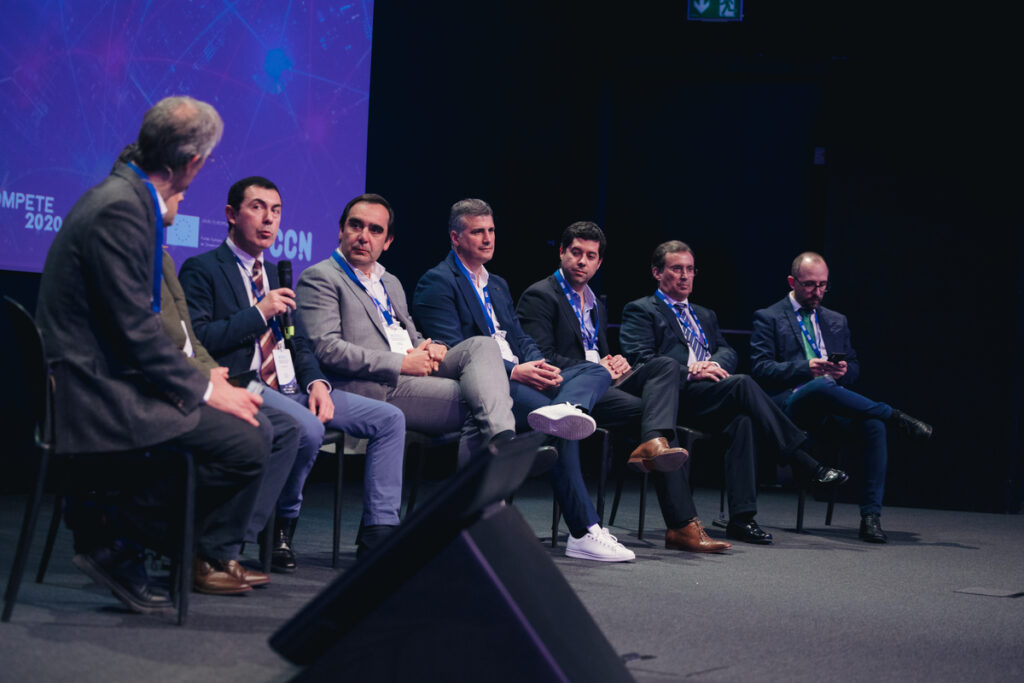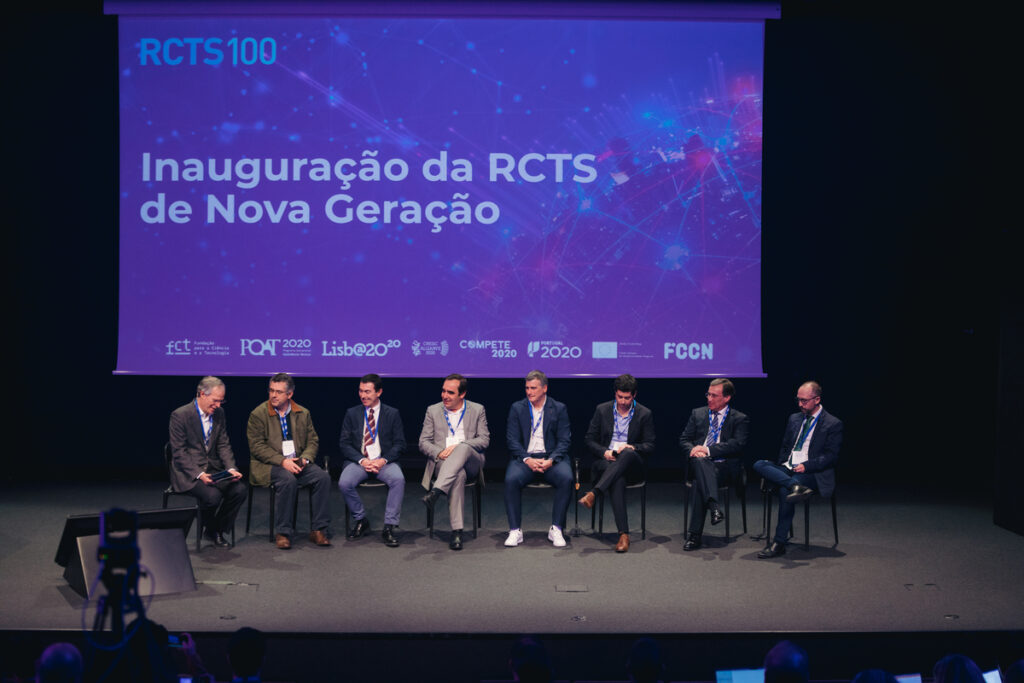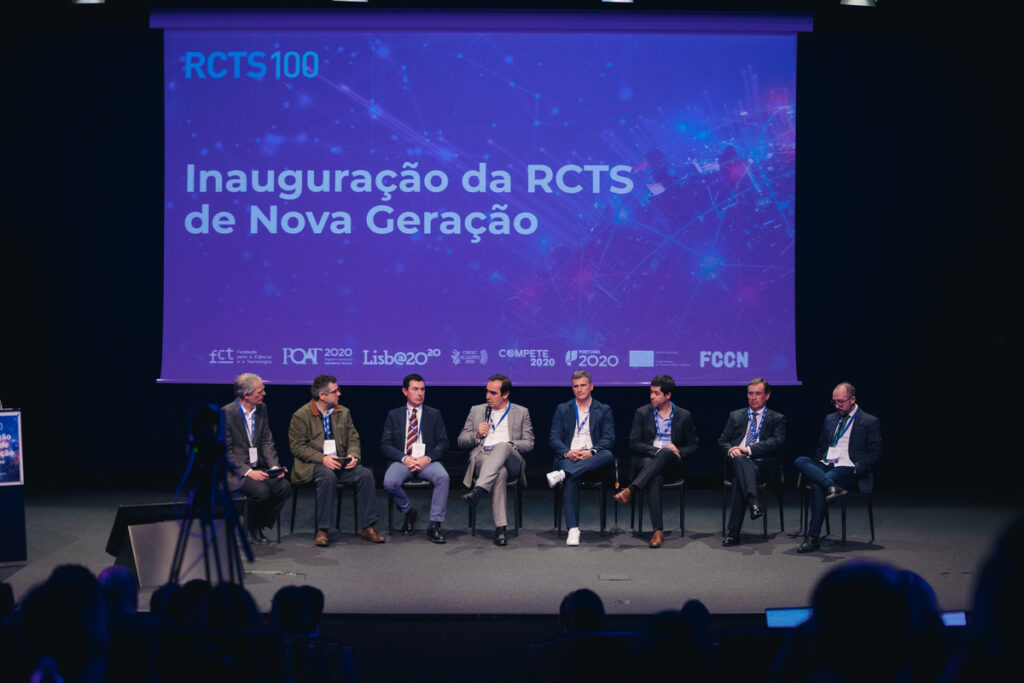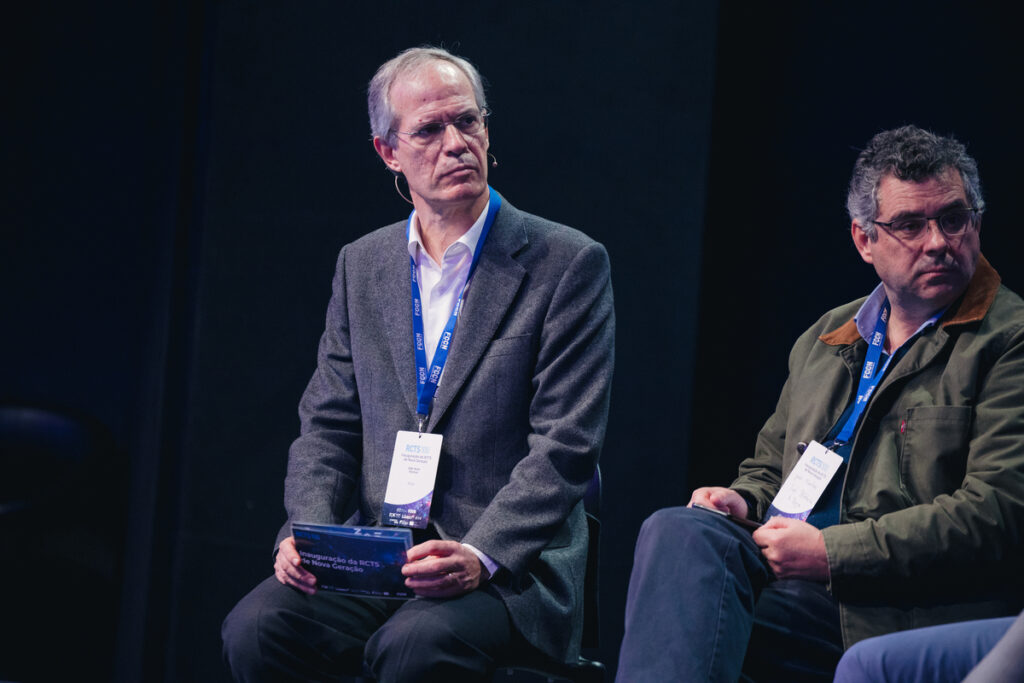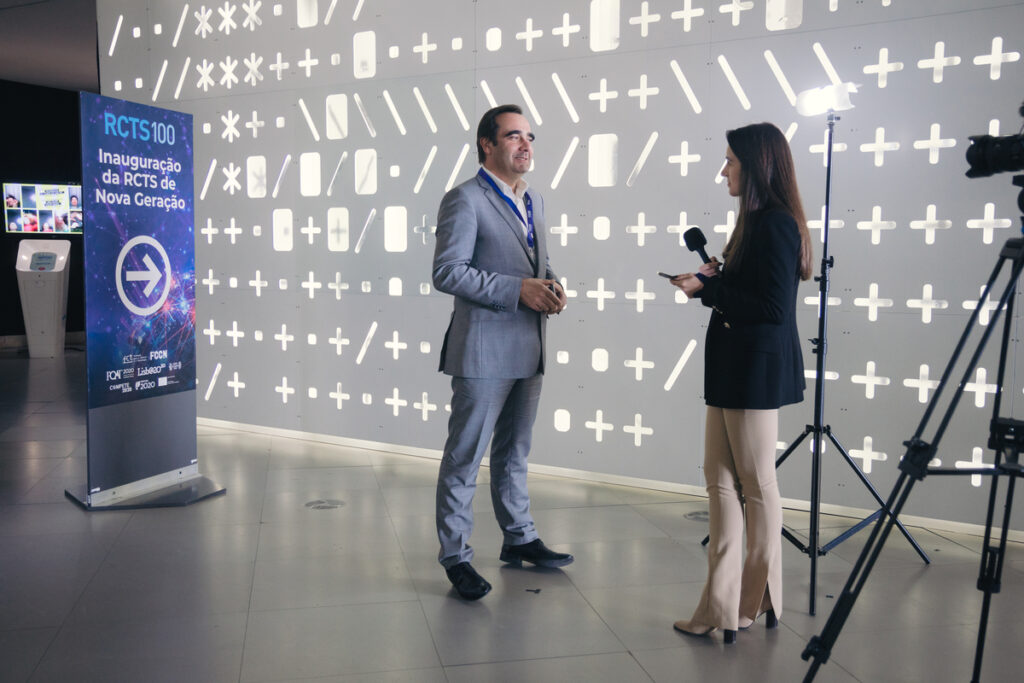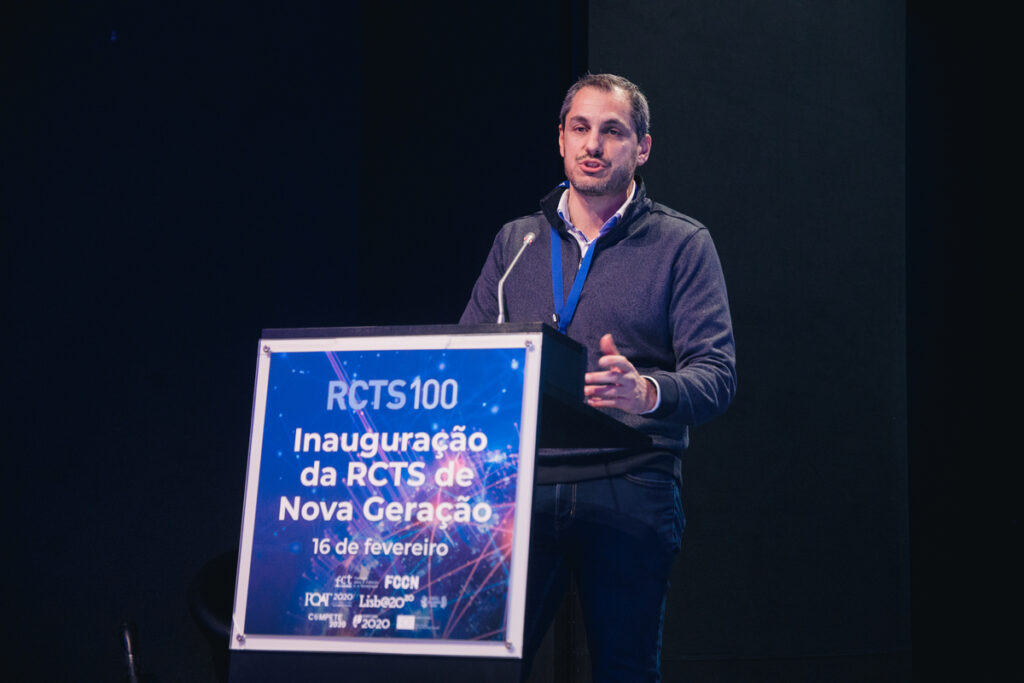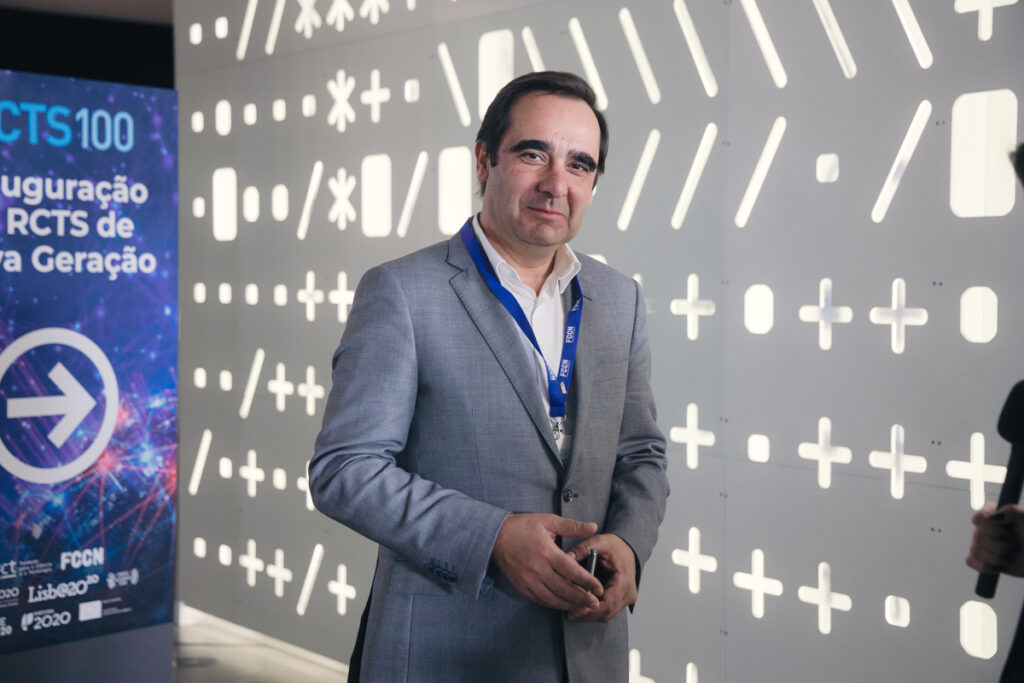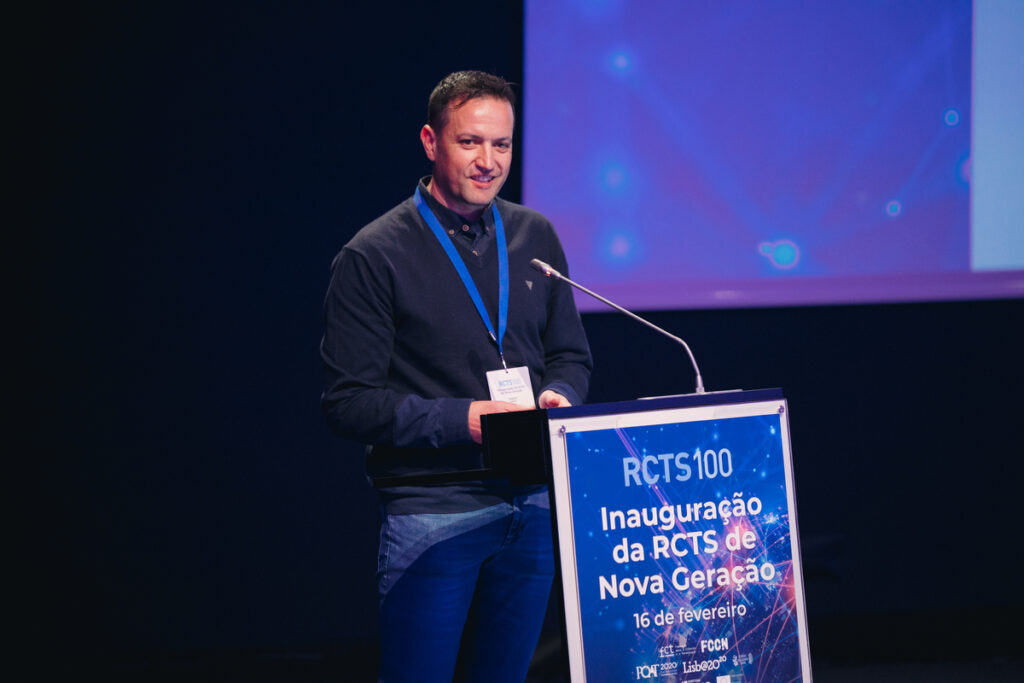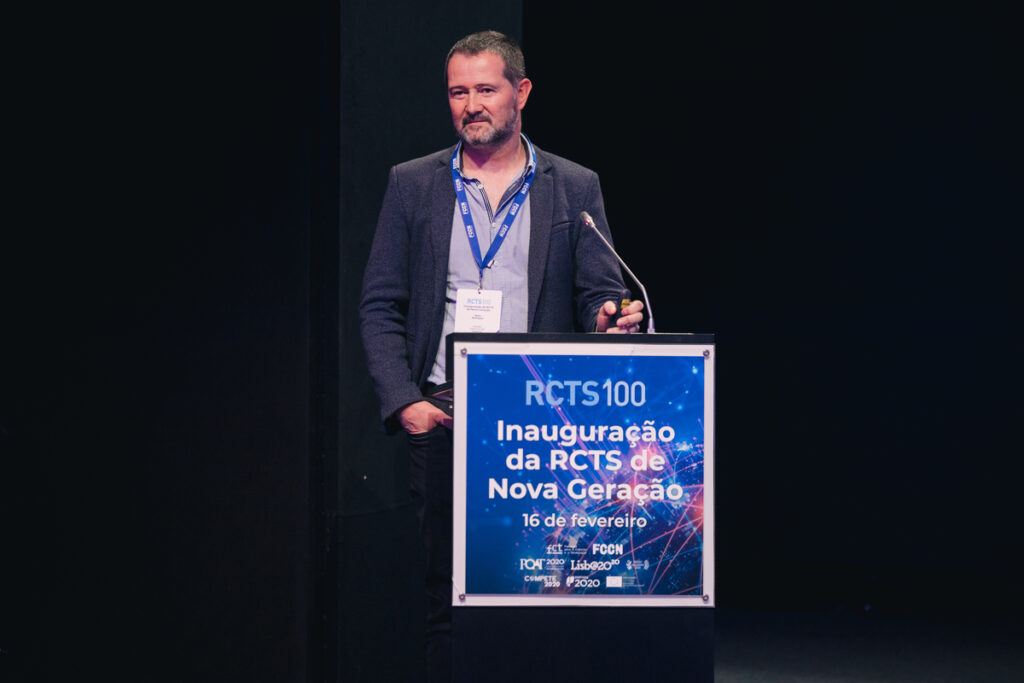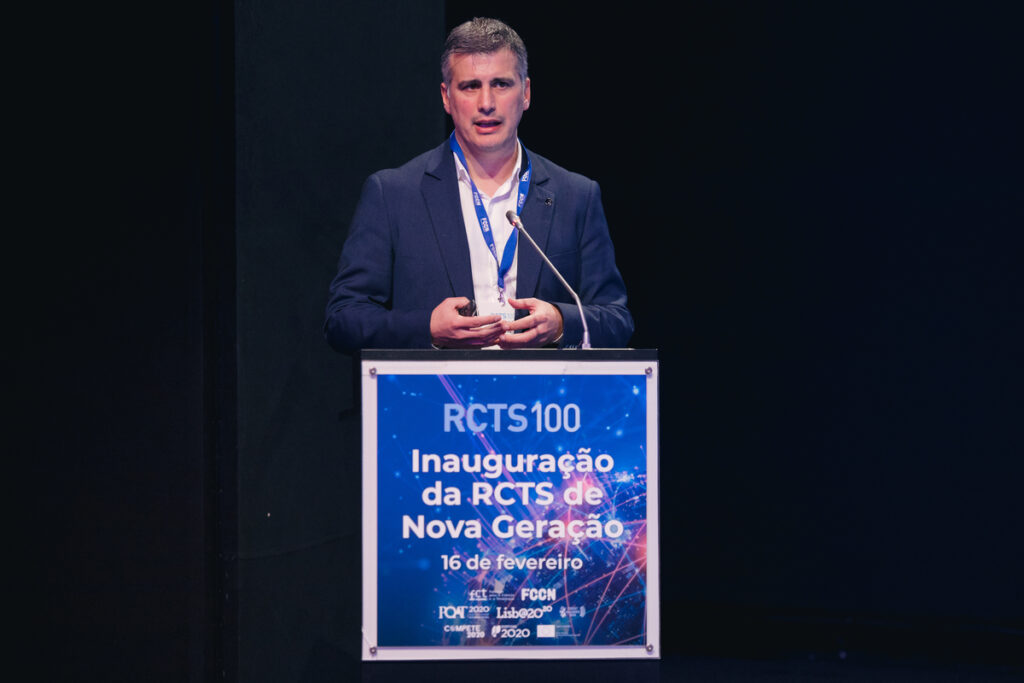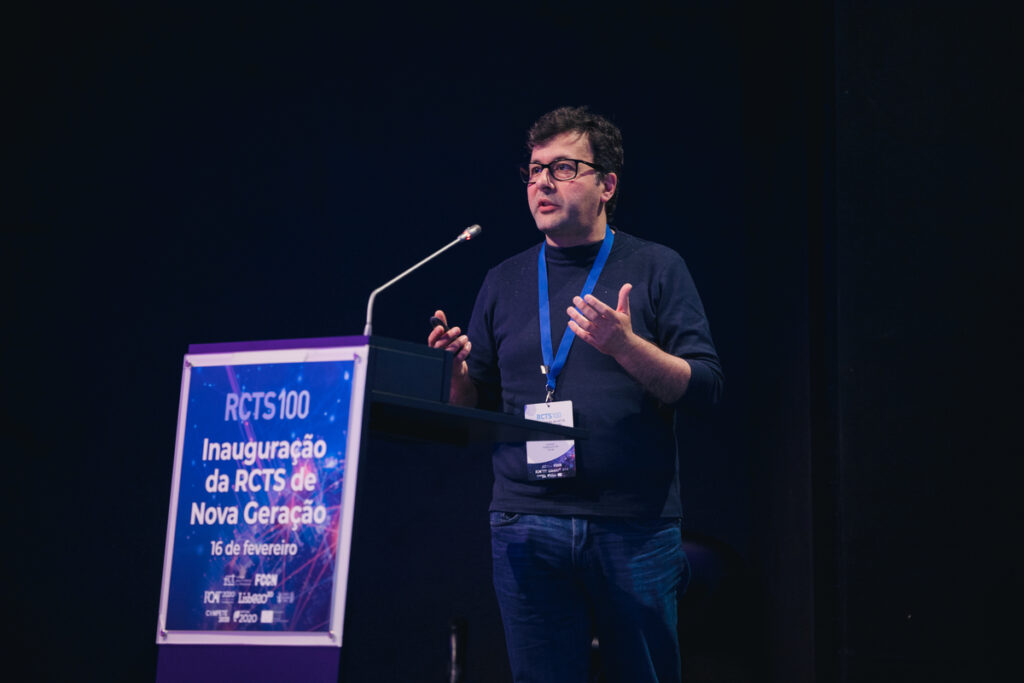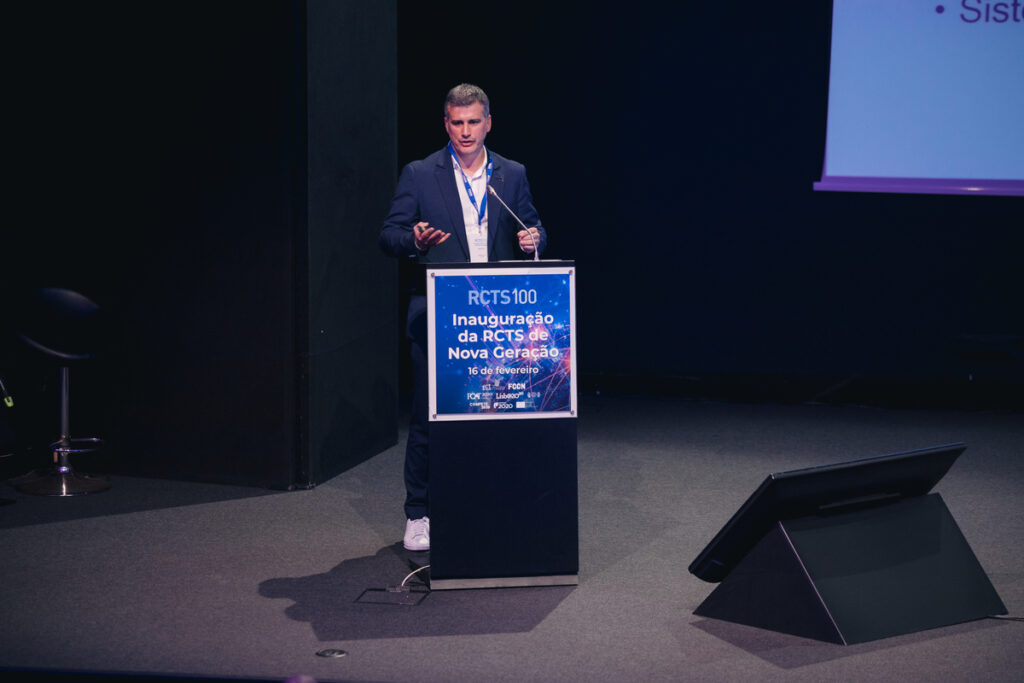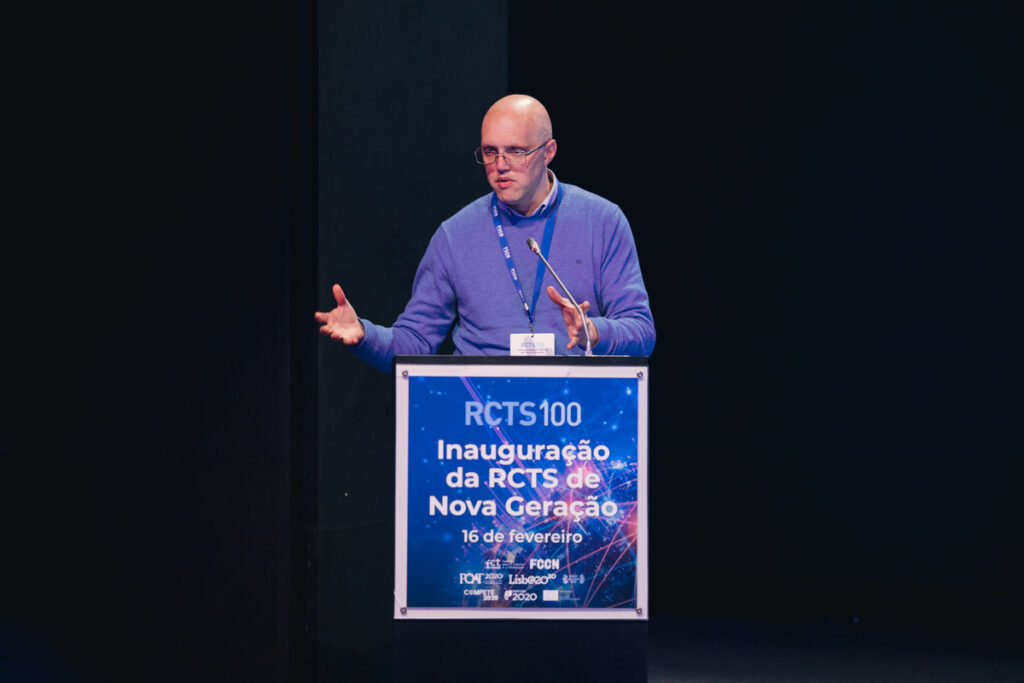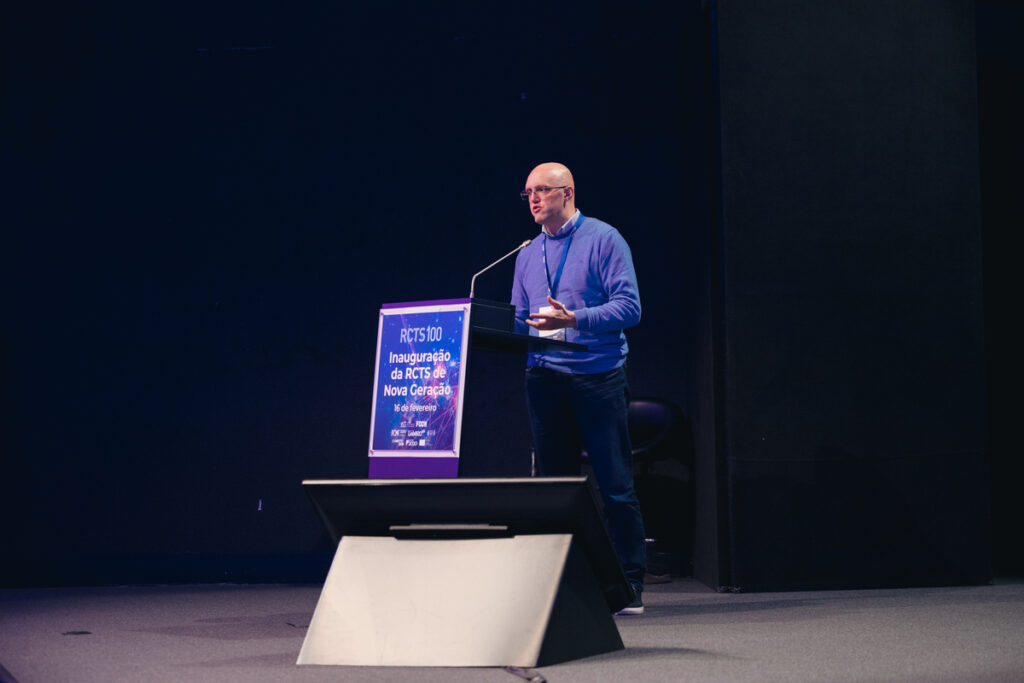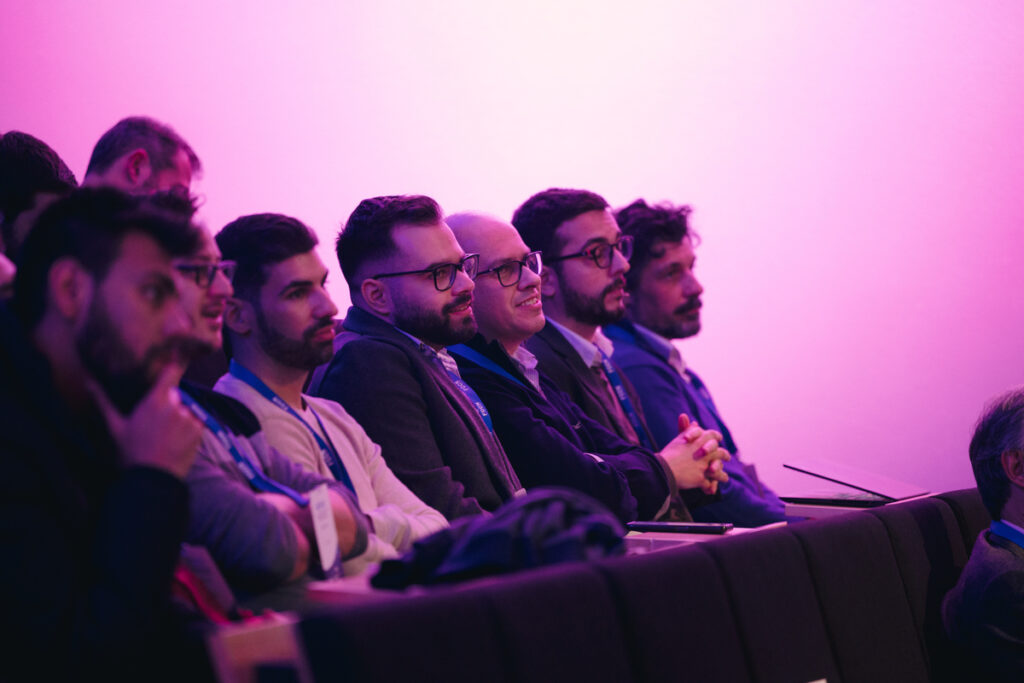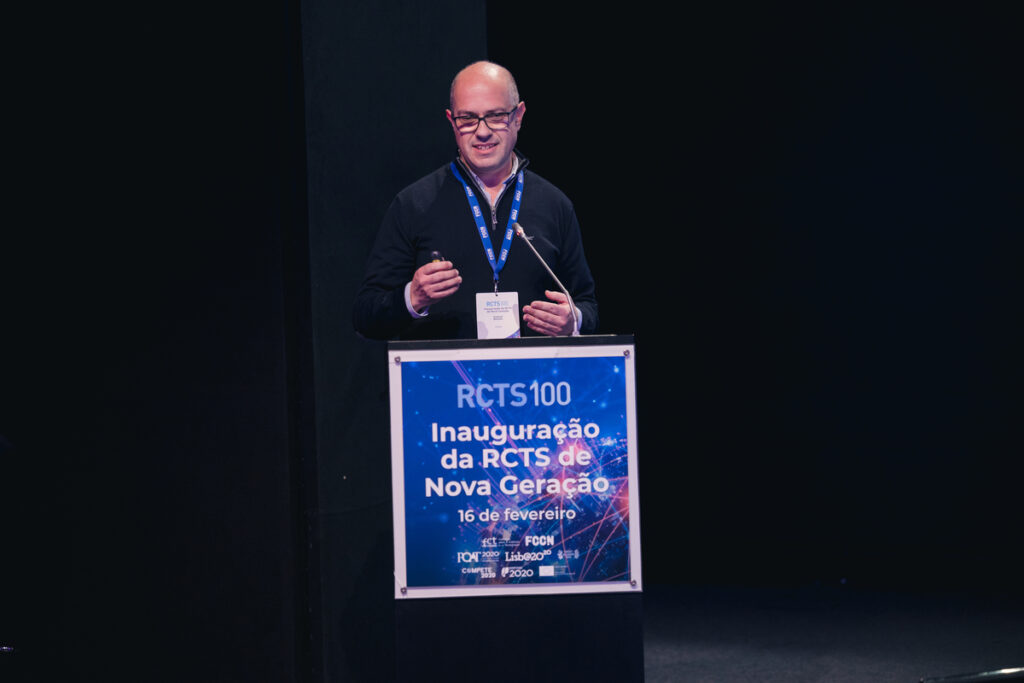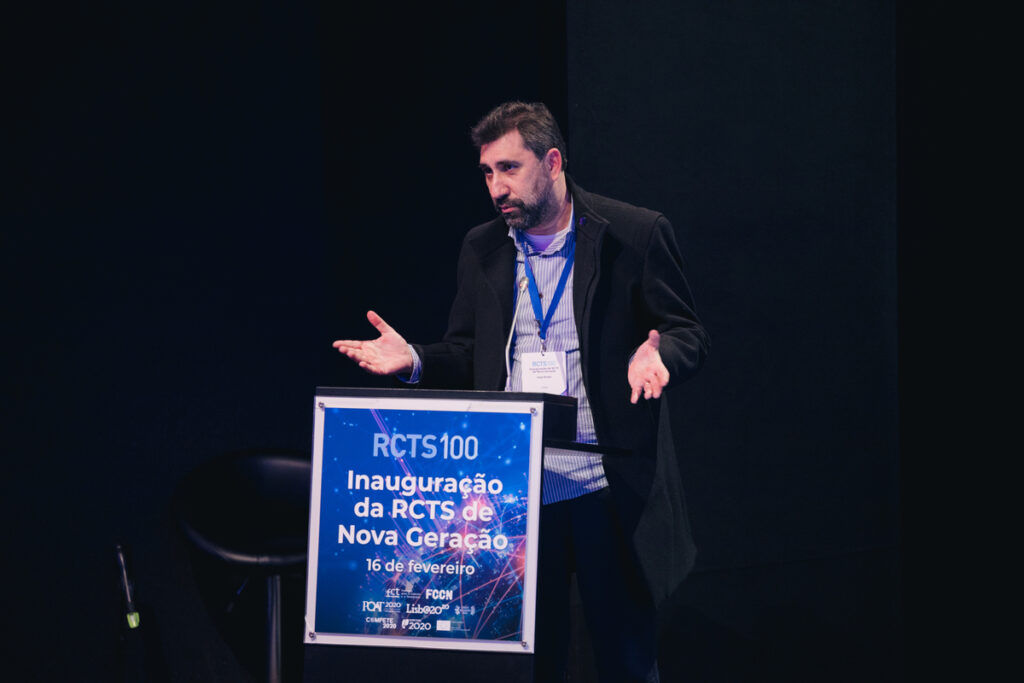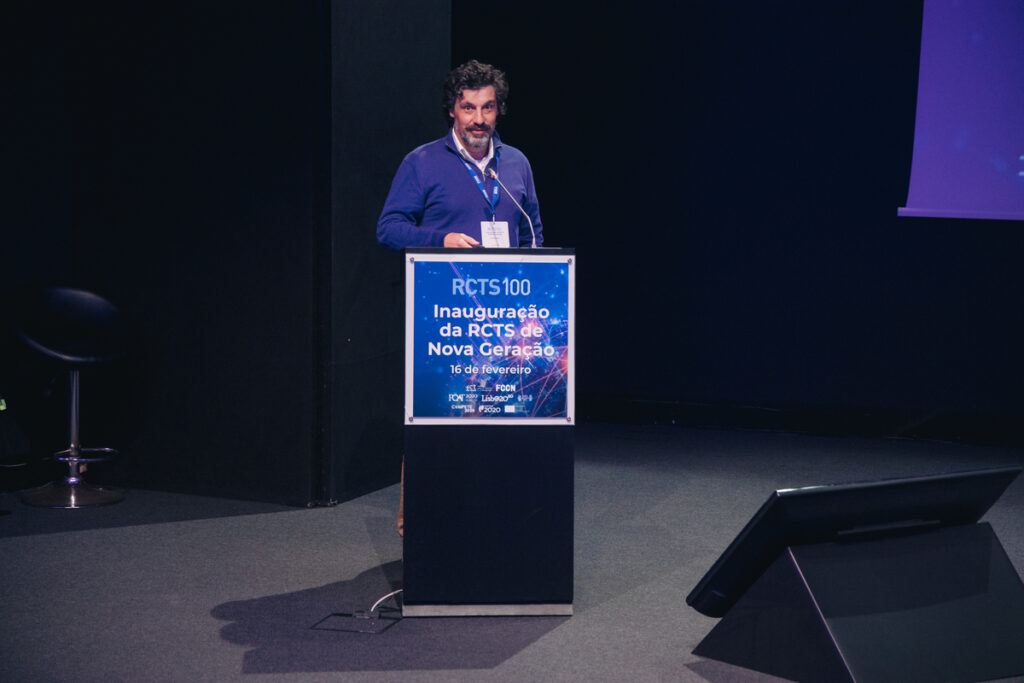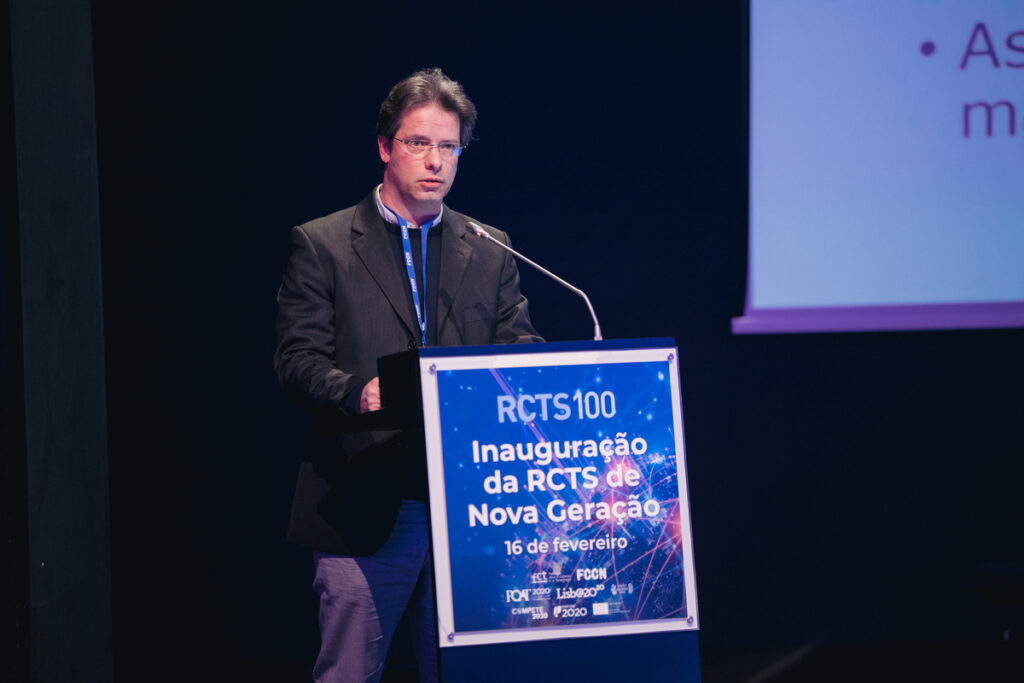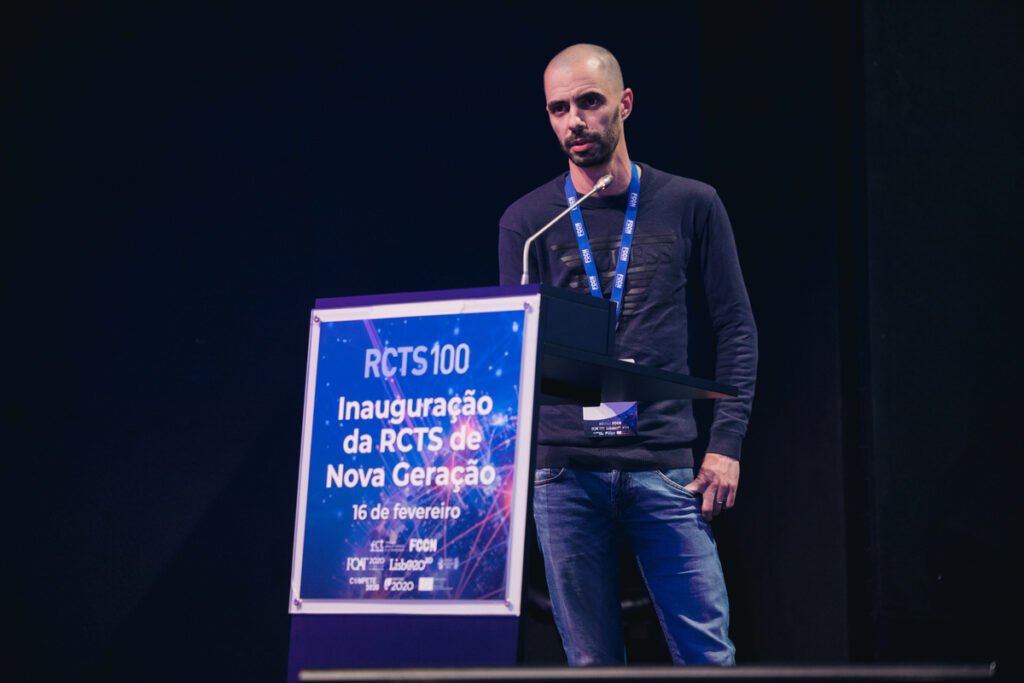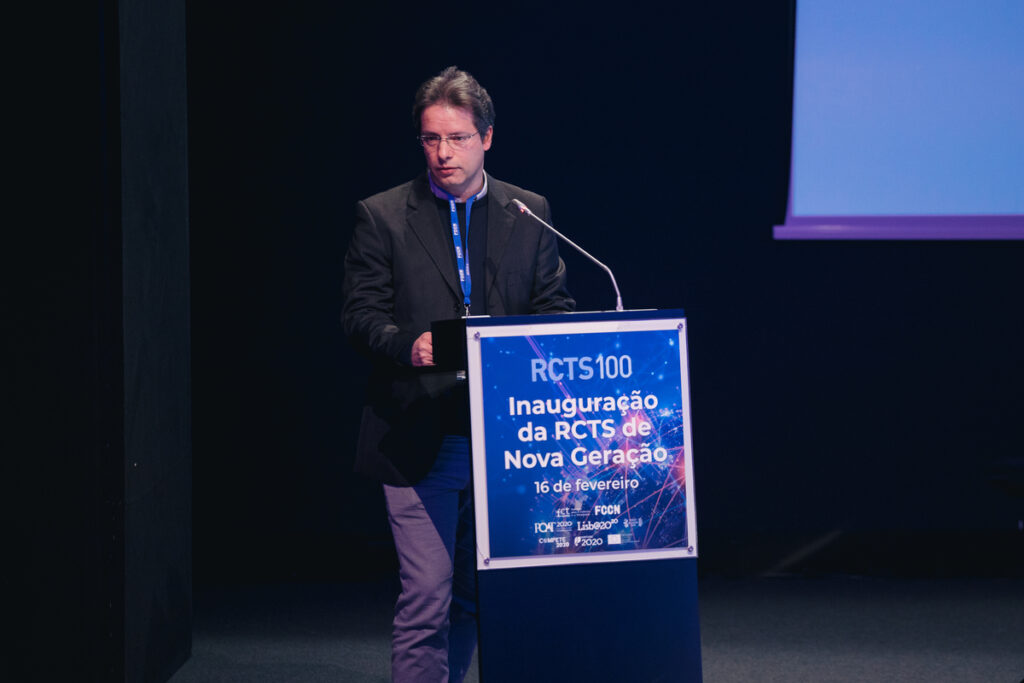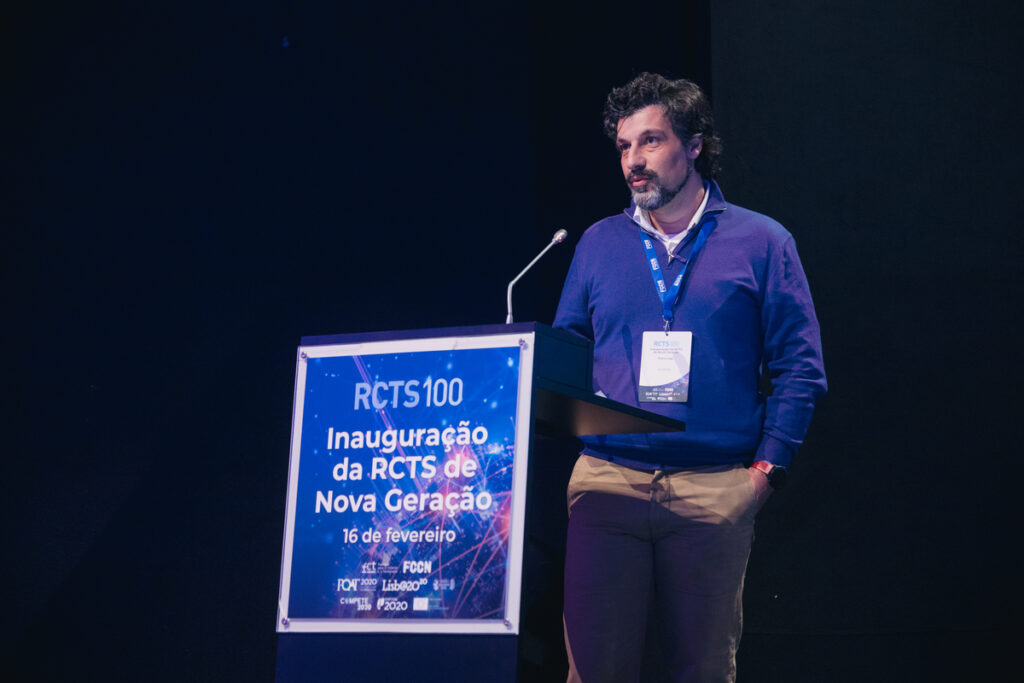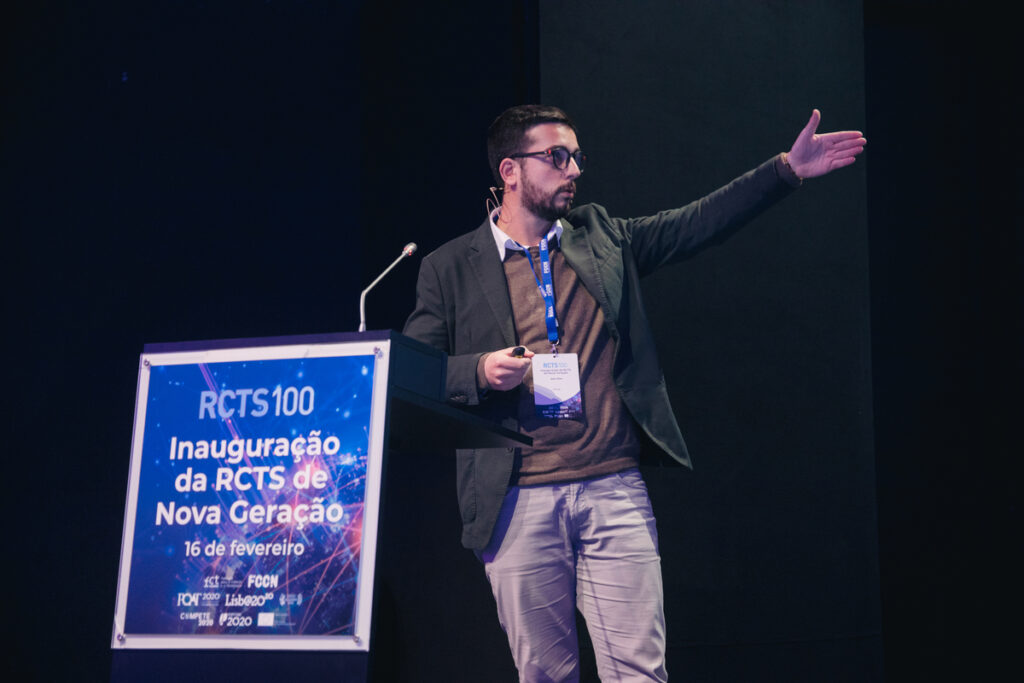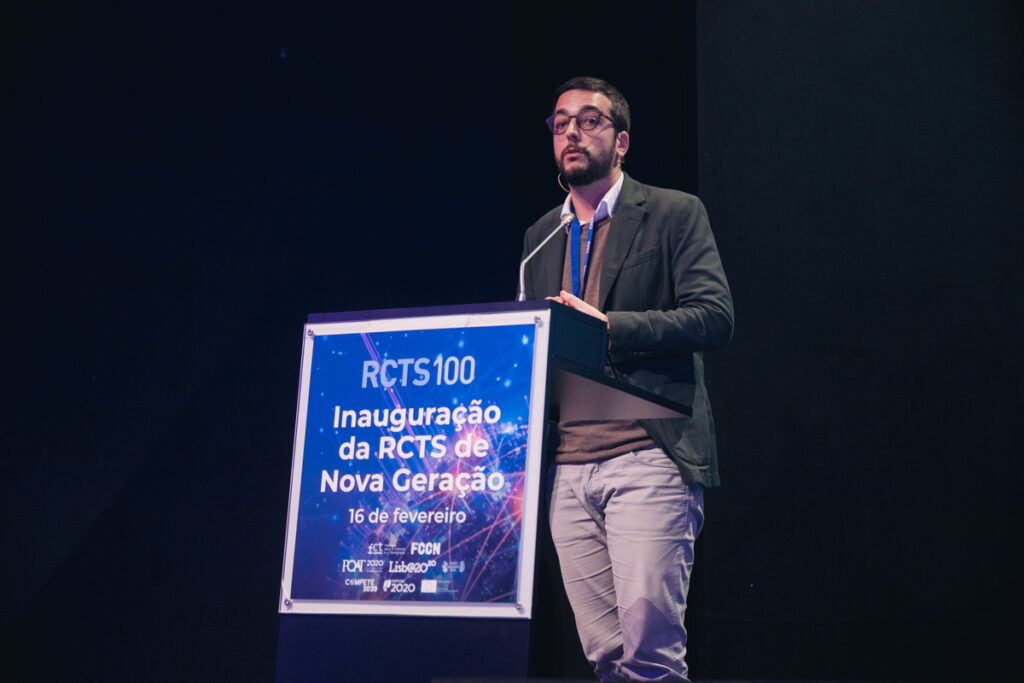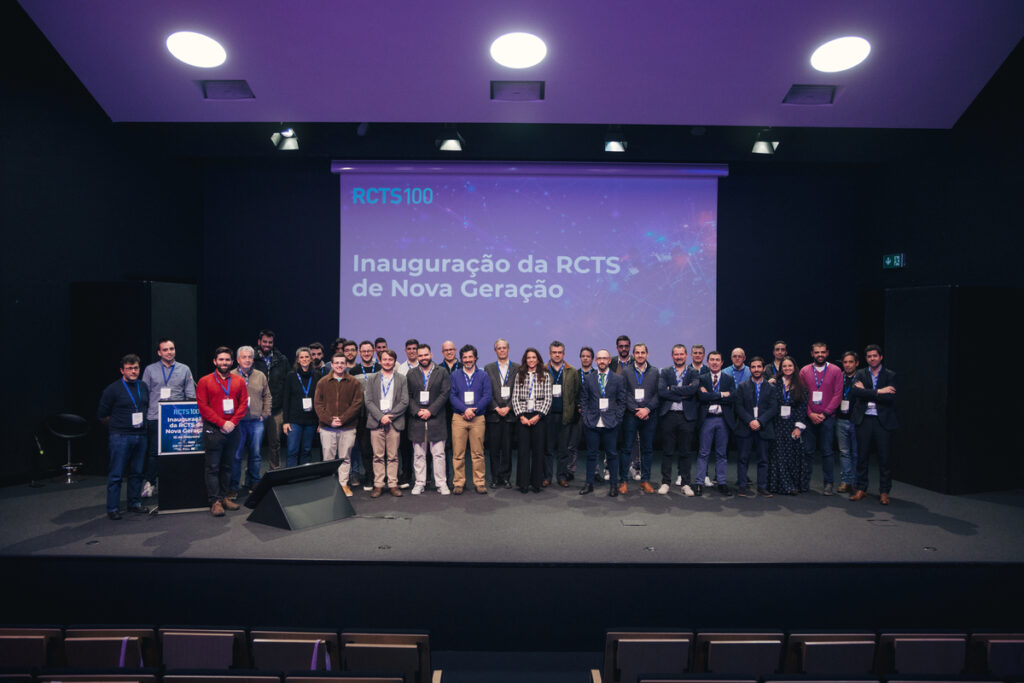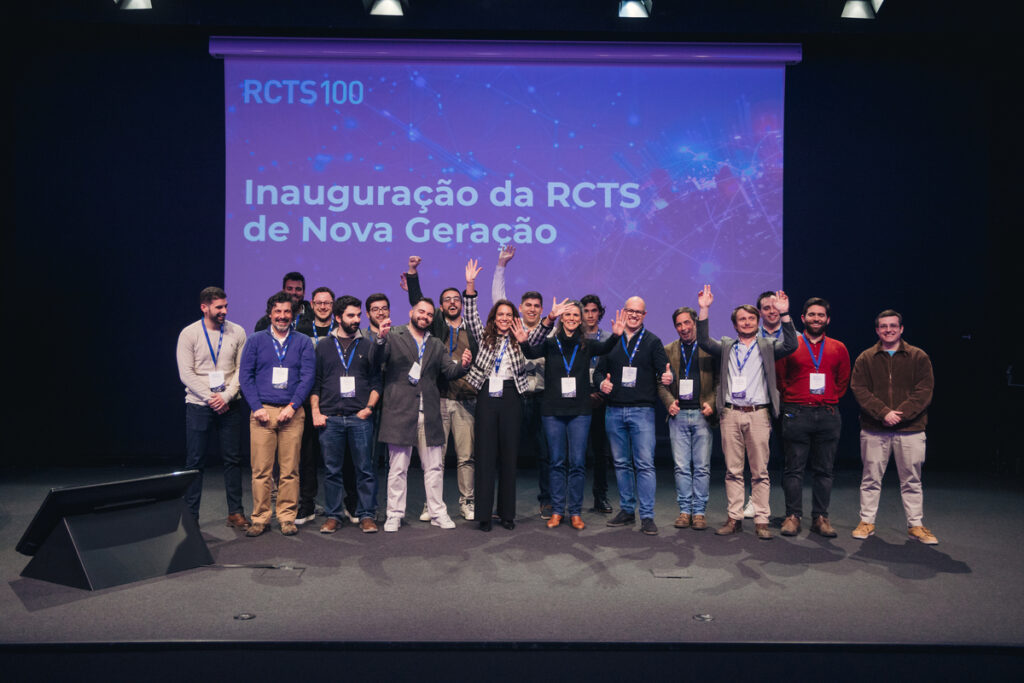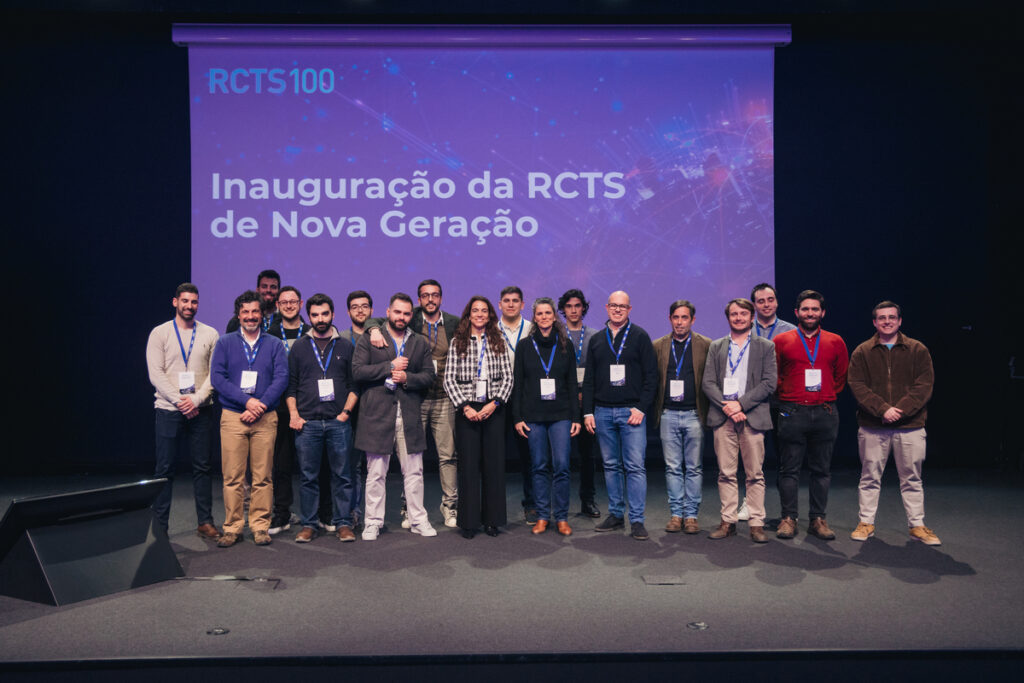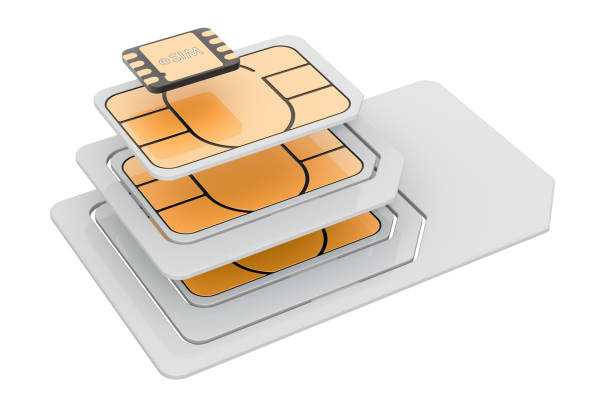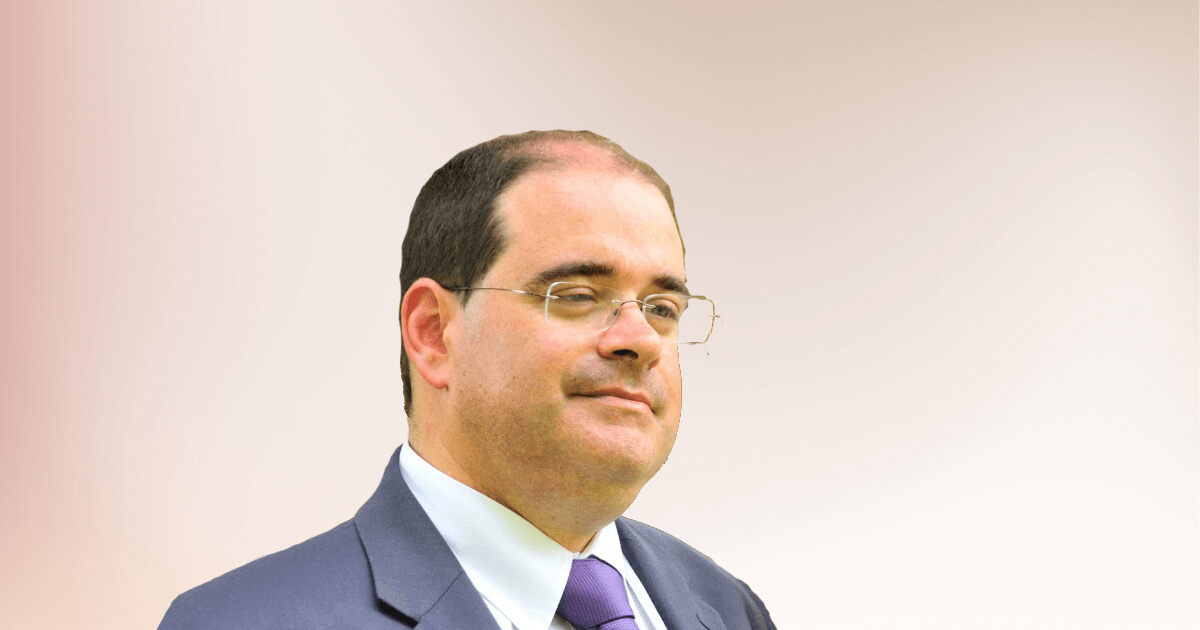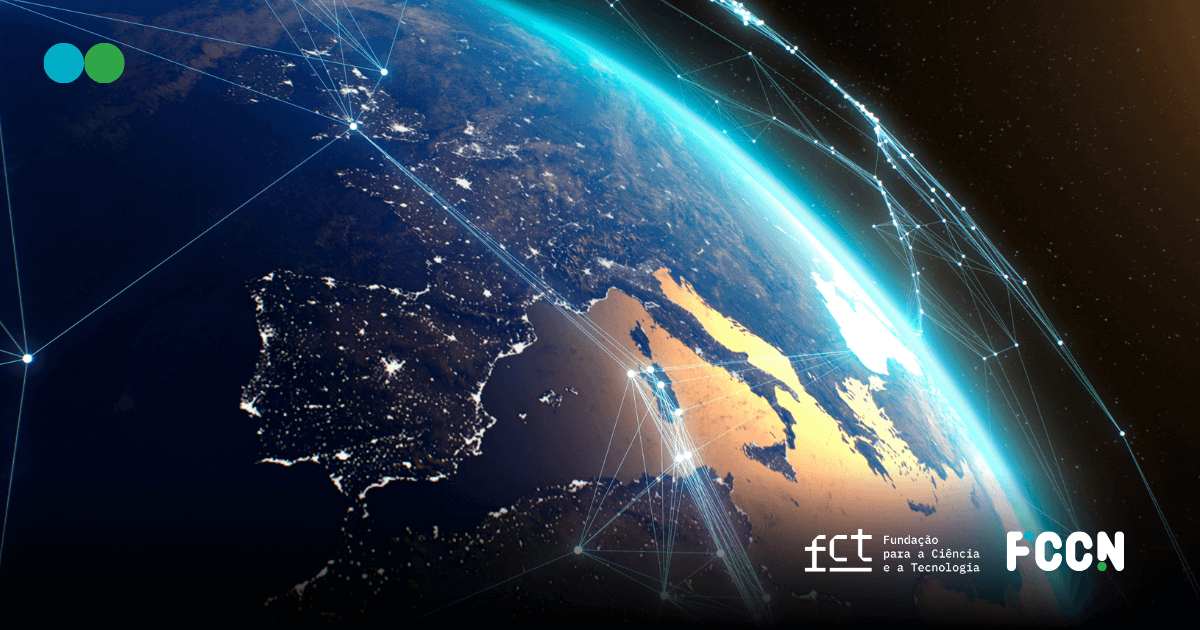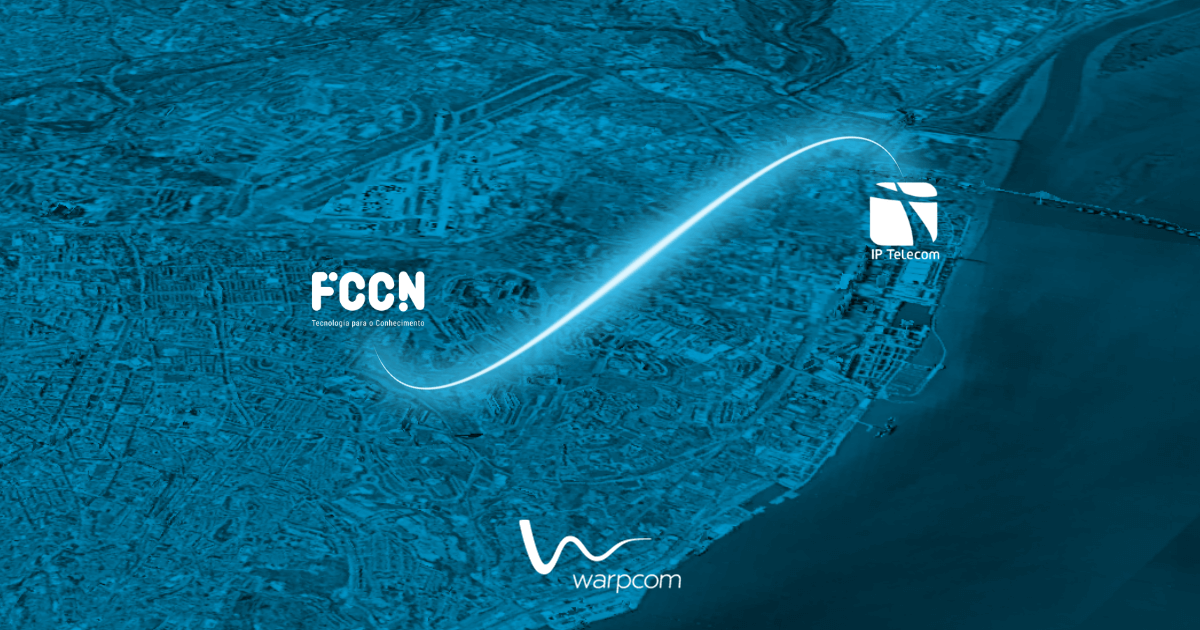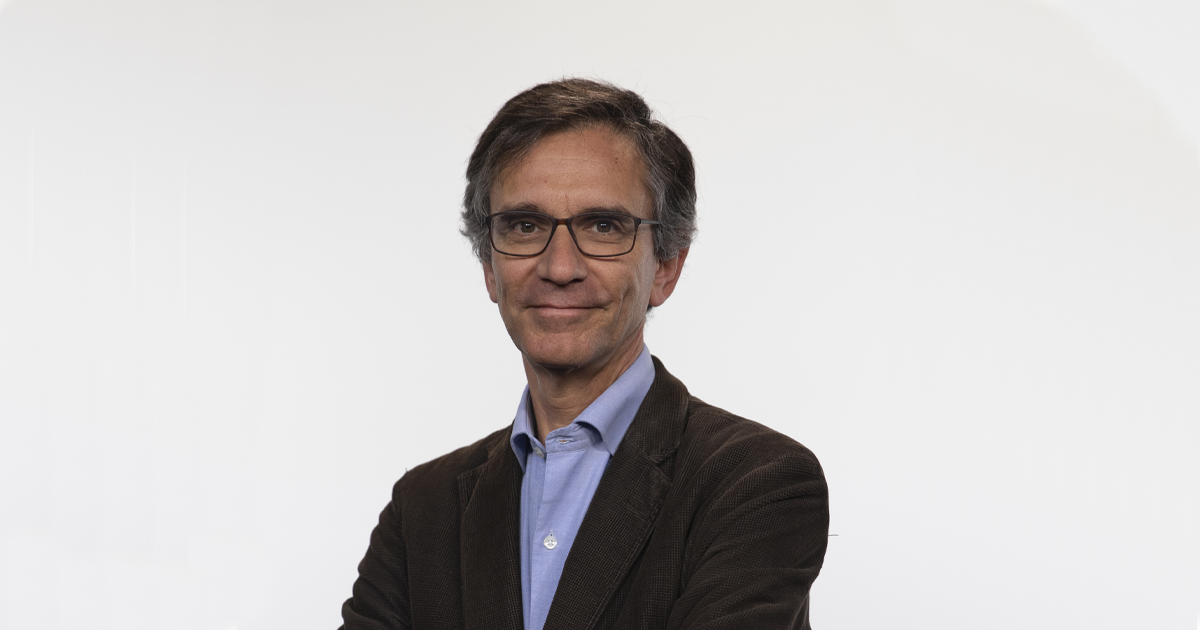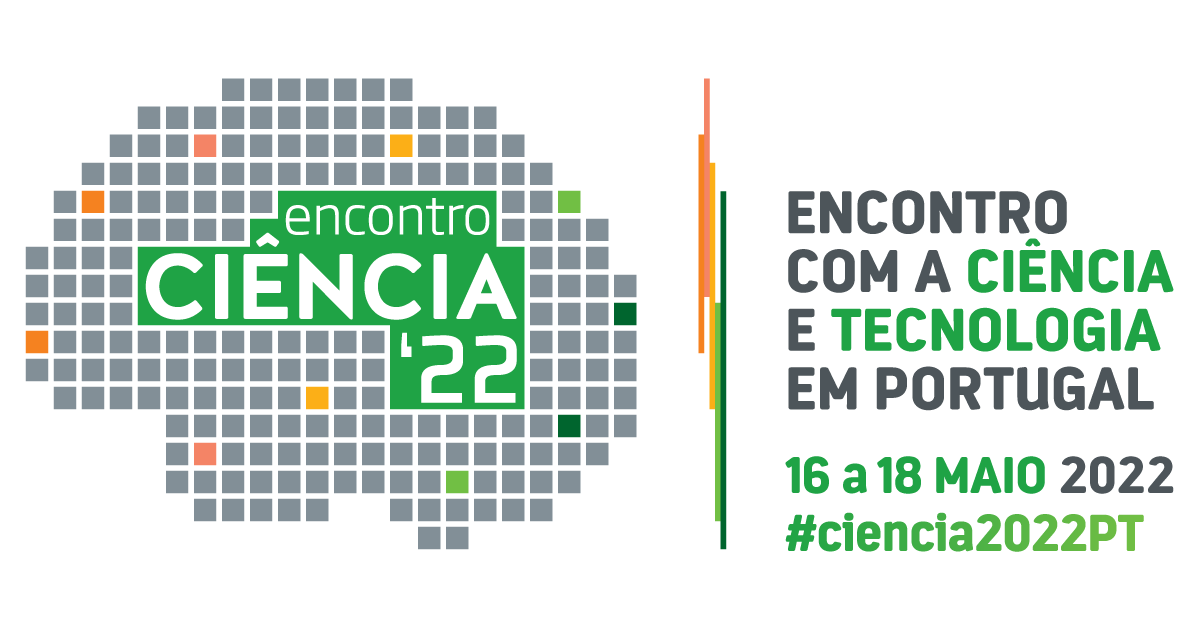No dia 16 de fevereiro, o Centro Ciência Viva, em Lisboa, acolheu o evento de inauguração da RCTS de Nova Geração, alcançada através do projeto RCTS100.
- Projeto cofinanciado pelo Programa Operacional de Assistência Técnica, Portugal 2020 e União Europeia, através do Fundo Europeu de Desenvolvimento Regional
No Centro de Ciência Viva, representantes das entidades de ensino e investigação juntaram-se para celebrar a nova geração da Rede Ciência, Tecnologia e Sociedade (RCTS). A atualização tecnológica da rede nacional de ensino investigação foi alavancada pelo projeto RCTS100, um investimento total de 17 milhões de euros, 13 dos quais provenientes do Fundo Europeu de Desenvolvimento Regional (FEDER), dedicado a “Reforçar a investigação, o desenvolvimento tecnológico e a inovação”.
“O projeto RCTS100 foi dos mais importantes, dos mais estruturantes e dos que tem mais consequência em toda a história que eu conheci da FCCN”, destacou o coordenador geral da Unidade FCCN, João Nuno Ferreira, acrescentando que “a RCTS é a pedra angular que segura, que faz a cola e dissolve a distância de todos os outros serviços e todas as outras infraestruturas”.
A Rede Ciência, Tecnologia e Sociedade (RCTS) é a infraestrutura digital de Conectividade e Computação, direcionada para a comunidade de Investigação e Ensino. Esta permite assegurar a comunicação, a colaboração e o desenvolvimento de novo conhecimento científico.
A nova geração da RCTS vem combater o “digital divide” e trouxe uma reestruturação dos serviços que a FCCN presta na área da conectividade mas também nas áreas da colaboração, segurança e conhecimento. Durante o processo, foi possível garantir o reforço tecnológico das redes locais de 9 Instituições de Ensino Superior público. Atualmente, a Rede chega a todas as capitais de distrito, com milhares de quilómetros de fibra ótica.
Um “antes e um depois” do RCTS100
“É um projeto muito querido para a casa, representa o backbone da ciência e das universidades e politécnicos em Portugal. Sem isso é muito difícil escalar para qualquer outro tipo de ciência do digital ao nível da investigação”, explicou o vice-presidente da FCT, Francisco Santos, salientando que “do ponto de vista das redes, há um antes e depois da RCTS100. Antes tínhamos uma Rede que estava completamente concentrada no litoral, agora temos uma Rede inclusiva”.
“A execução do projeto RCTS100 veio assegurar uma plataforma comum de comunicações, que cobre todo o território nacional, chegando a todas as capitais de distrito, e que garante o fornecimento de um mesmo conjunto de serviços avançados às entidades de ensino e de investigação, de forma independente da sua localização.”, reforçou Ana Pinto, Diretora do Área de Redes da FCCN.
Este acesso igualitário à Rede, independente da área em que se insere a instituição, combate o “digital divide” – que se caracteriza, tecnicamente, pelo acesso diferenciado a serviços consoante a localização. Algumas Instituições de Ensino Superior não tinham disponível todo o portefólio de serviços de conectividade da RCTS, o que as “colocava em pé de desigualdade, porque havia contraste e assimetria no acesso aos serviços”, explicou Ana Pinto.
Um exemplo desta desigualdade, que agora se mitiga, é que algumas entidades passaram de ligações à internet de 1Gbps para ligações a 100Gbs, um aumento acentuado da capacidade de acesso à Rede e à internet, e passaram a ter a possibilidade de ativarem múltiplas ligações, a 10 ou 100Gbps, dedicadas a projetos de investigação como descreveu a Diretora do Serviço de Redes da Unidade FCCN acrescentando que, para as entidades conseguirem usufruir de toda esta capacidade instalada, foi muito importante a capacitação da rede interna de algumas IES, também conduzida no âmbito do projeto RCTS100.
Até ao momento, o Projeto RCTS100 teve um impacto muito positivo nas instituições, reduzindo largamente as queixas da comunidade educativa, como foi testemunhado pelos diretores de informática de várias IES presentes no evento.
Futuramente, pretende-se angariar o financiamento necessário que permita quebrar o “digital divide” ainda existente nas ligações para as Regiões Autónomas da Madeira e Açores.
Veja na Galeria abaixo alguns dos momentos chave do evento.
